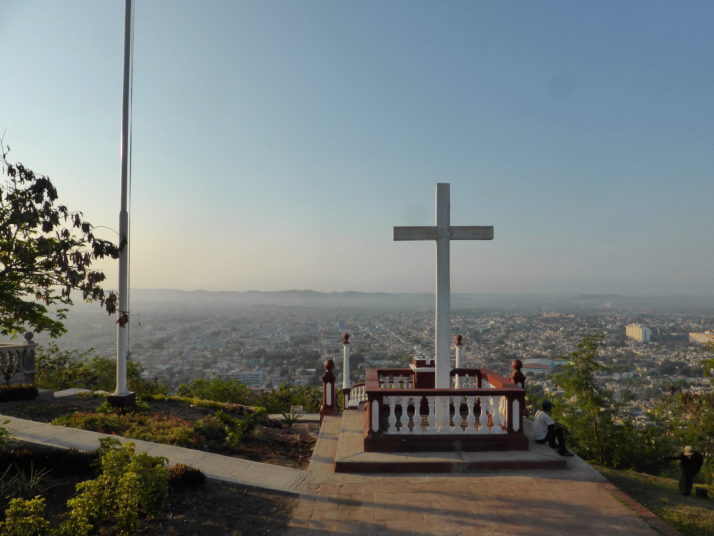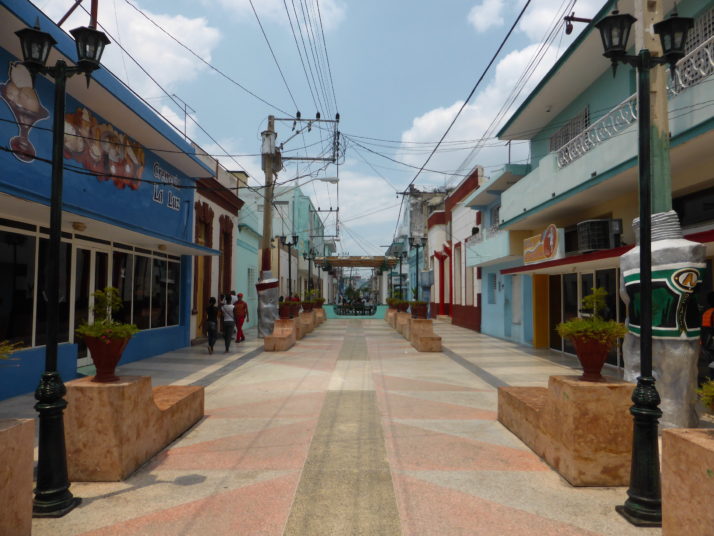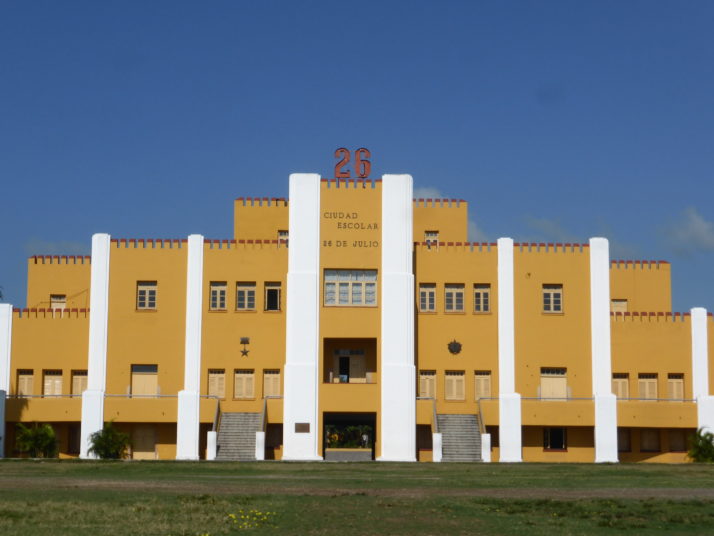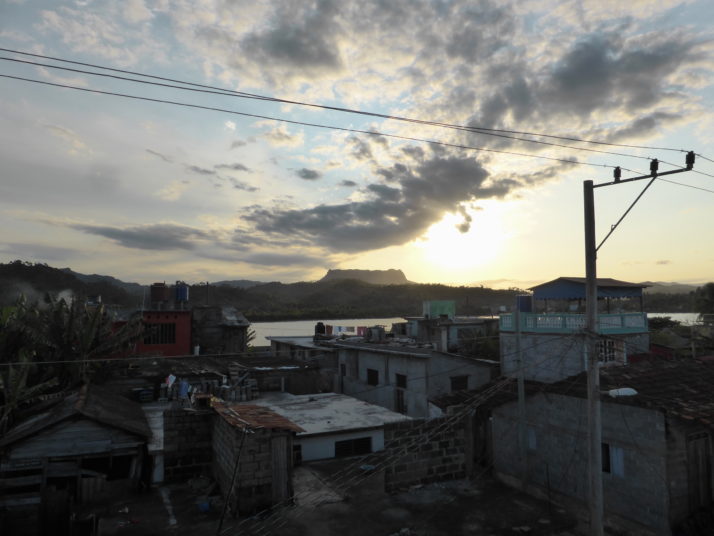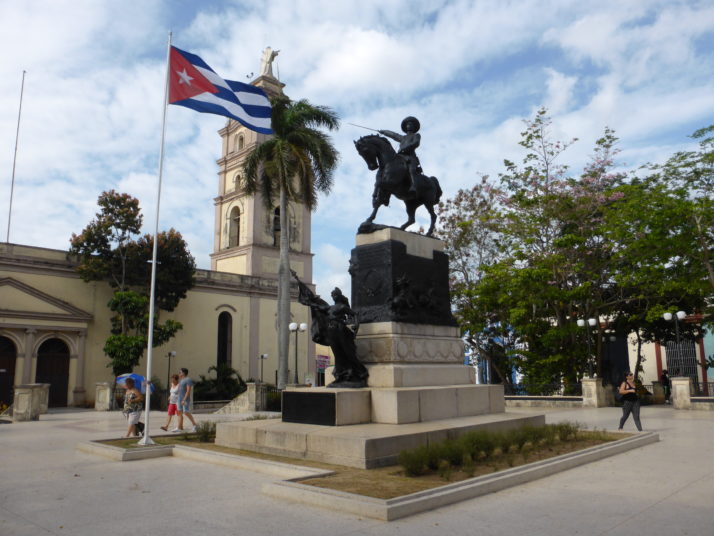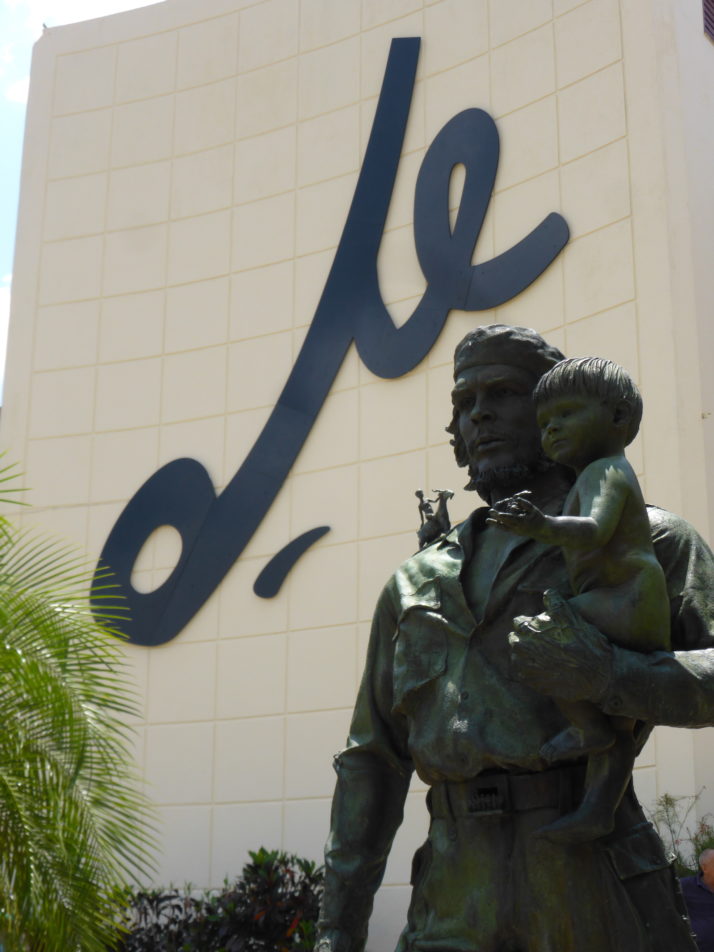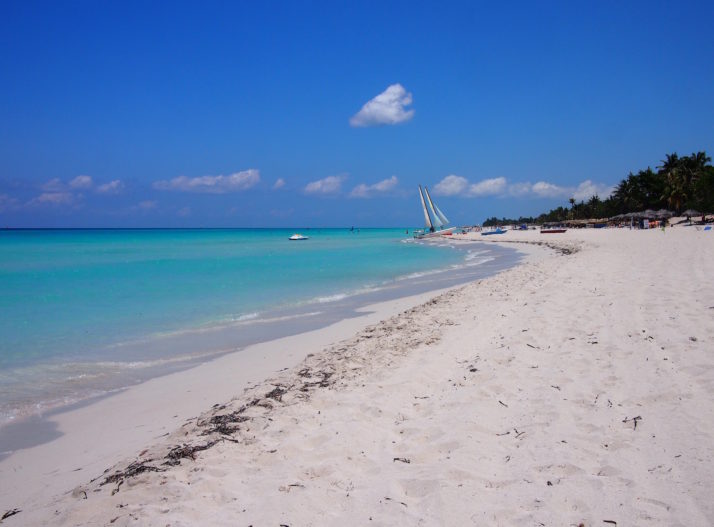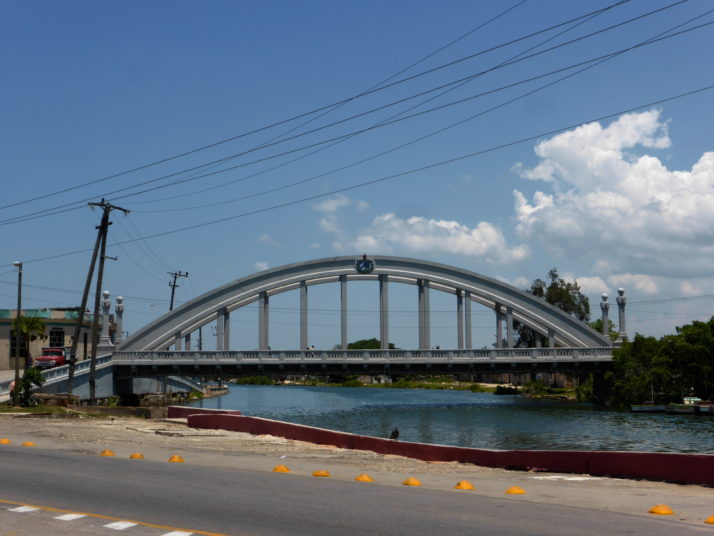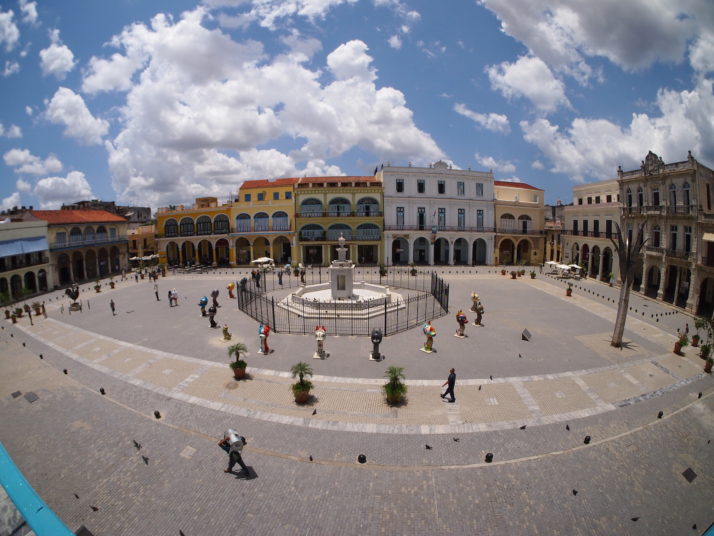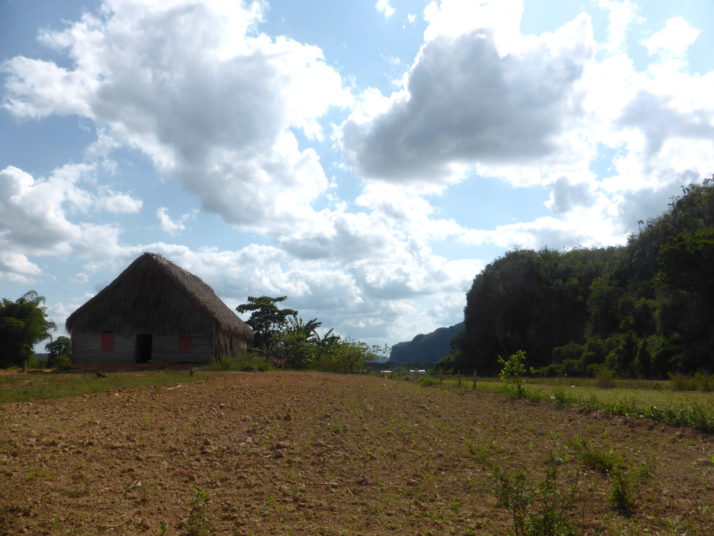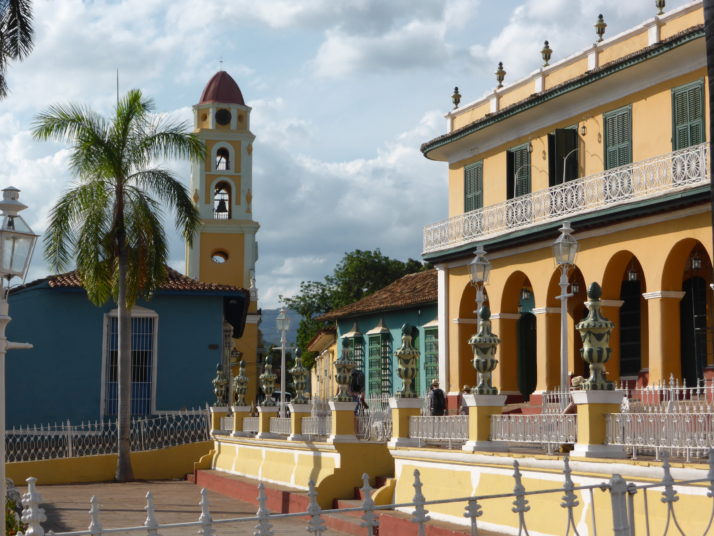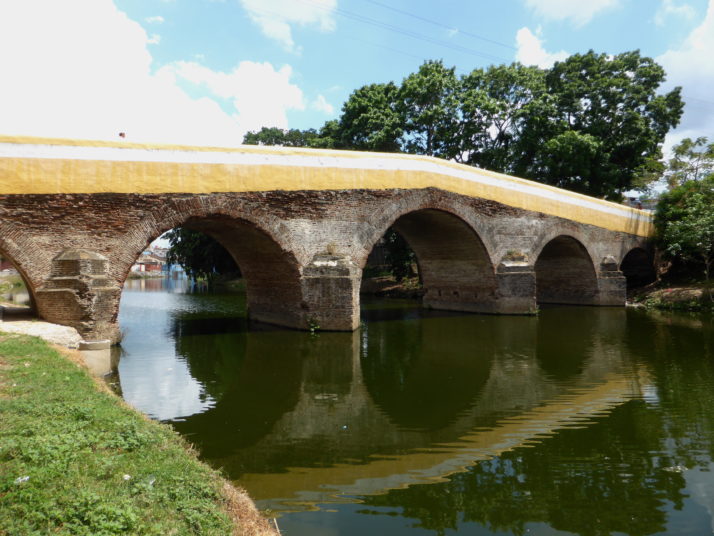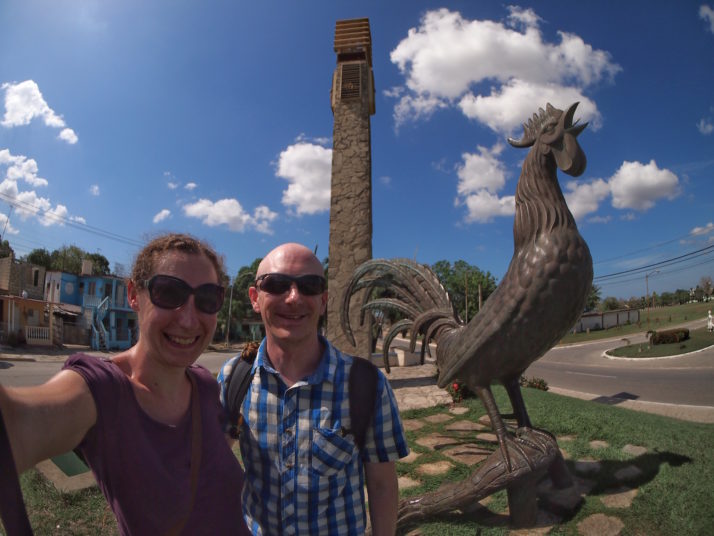The distance from Baracoa to Holguin is only about 150 miles (250km) by the most direct route, but the only option if you want to travel by the Viazul bus service is to take the bus back to Santiago de Cuba and change there for Holguin. In theory this is possible in one day – if you take the 08:15 bus out of Baracoa which arrives in Santiago 13:45, you could then catch the 16:00 which gets into Holguin at 20:15. This seemed like a very long day along roads that we’d already seen so when we were planning our route through Cuba we decided that we would like to try to go along the notoriously bad road to Moa and there transfer back to Holguin where our flight landed. During our pre-trip research, it was difficult to find any clear information on how to do this and so here’s our trip report from April 2016 if anyone else is planning the same journey.
In Baracoa, you need to go to the local transport yard at the corner of Calixto Garcia and Coroneles Galano, just a few blocks from the central square.
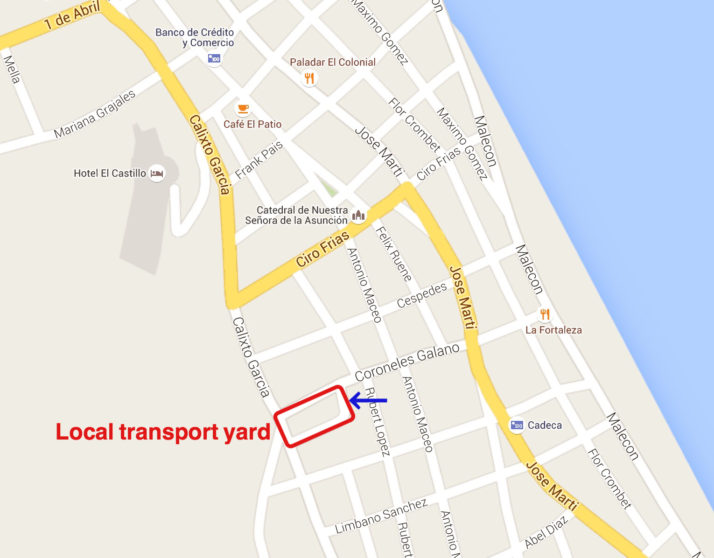
Early morning is best as there are no fixed schedules so you may have to wait for quite a while (we did). We arrived at 07:15. For Moa, wait at the far end closest to Rubert Lopez (see blue arrow in the map above) – place names are painted on the wall around the yard although we didn’t see them at first and asked around. While you’re waiting we recommend grabbing a fried egg sandwich for breakfast from the Terminal Cafeteria.
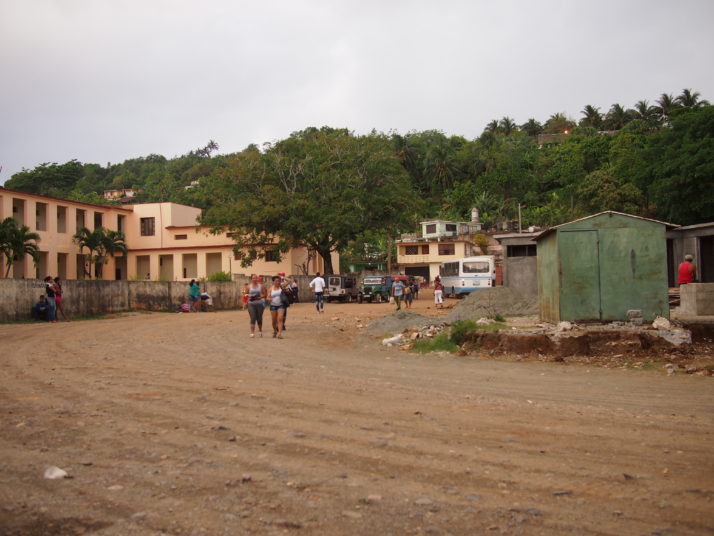 Local transport yard in Baracoa
Local transport yard in Baracoa
I get the impression that usually transport is a bit more frequent because by the time the first truck pulled up at 08:30 a LOT of people were waiting. Also, I understand that it’s usually jeeps that do the Baracoa-Moa stretch but in our case it was a passenger truck with bench seats down either side of a covered back section. The guy who takes the money shepherded us in – it’s a bit of a scrum – we were the only tourists and he charged us more so I think we got some kind of priority. Locals were charged 60-70CUP (2.5CUC), we were charged 4CUC each, I tried to argue about this but there was no negotiating he just repeated the price. Our big rucksacks were stowed under the seats and our small rucksacks on our laps. The truck was tightly packed.
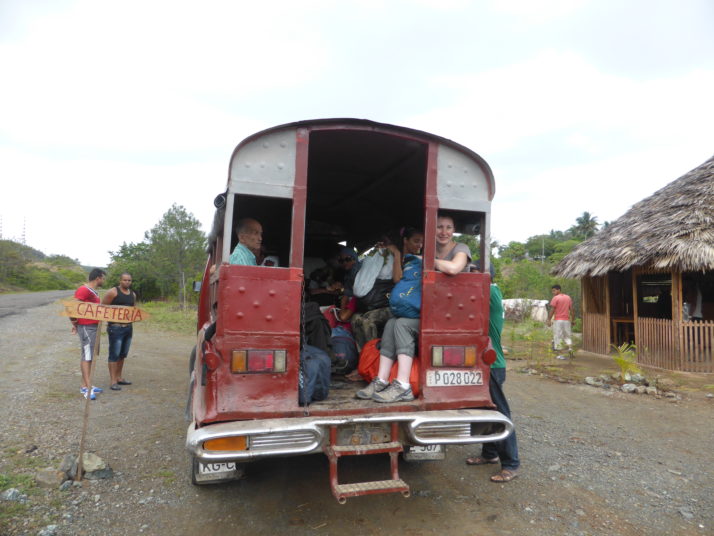 Julie in the back of the passenger truck from Baracoa to Moa
Julie in the back of the passenger truck from Baracoa to Moa
The road from Baracoa to Moa is in a pretty poor state of repair with lots of potholes and it’s quite dusty as the back of the truck is open. We stopped after about 1.5 hours at a roadside cafeteria where it was possible to buy snacks (including cucuruchos at local prices = CUP5 each). The driver also changed the wheel as we had a puncture – lots of guys pitched in and we were on our way within 20 minutes.
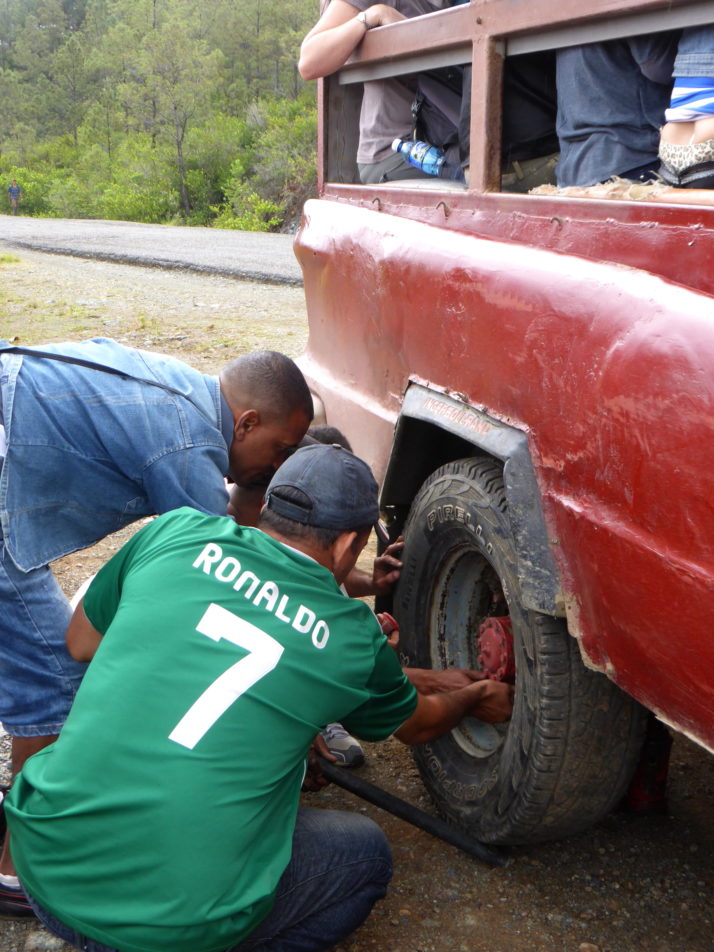 How many Cubans does it take to change a wheel…
How many Cubans does it take to change a wheel…
As we approached Moa we noticed a lot more heavy industrial activity compared to the more rural sights that we passed on the first part of the journey. The road passes the huge nickel plant and the wasteland stretching out around it. We eventually arrived at the bus station in Moa at 11:15 (a journey time of 2.75 hours) – this is the last stop so just get off when the truck empties.
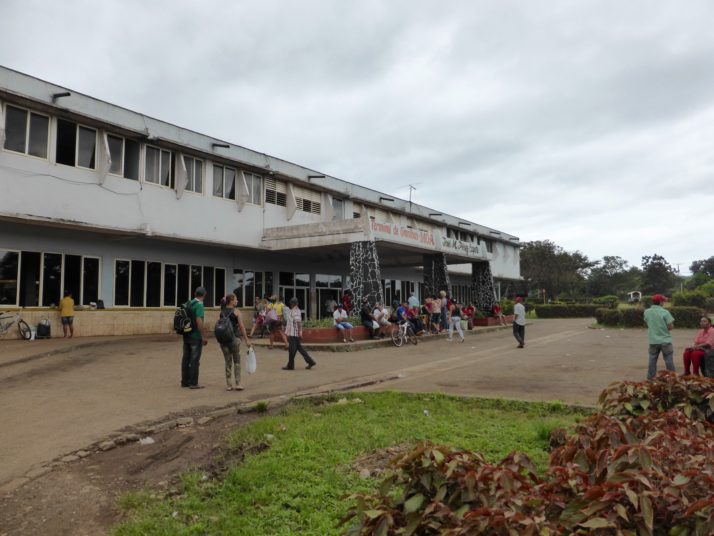 Bus station at Moa
Bus station at Moa
A local couple who came from Baracoa were also going on to Holguin and they adopted us – I don’t know their names but for the purposes of the story we’ll call them Pedro and Maria. We waited inside the bus station with Maria while Pedro went looking for colectivos (private taxis that leave when they’re full) out in front (after first checking the back to see that there were no trucks). The bus station has snacks available from various vendors and toilets (no running water) – follow the corridor behind the seating area to the right when you enter. I noticed on the timetable that the Omnibus Nacionales bus was due to leave at 1pm (37CUP) but Pedro asked at the ticket desk and it was no good for us as you must have a Cuban ID card to travel on that service.
After almost an hour, he found a car that was going to Holguin – if you’re on your own I would recommend just hanging around outside and asking each vehicle that pulls up. The only problem was that the price for Cubans was 100CUP (4CUC) each but the driver said that for us (foreigners) it would be 10CUC each! I tried negotiating, including walking away back to the waiting room where the driver eventually followed us but he absolutely would not budge on the price. If we’d been alone we might have hung around to see if we could find a cheaper alternative but Pedro and Maria seemed to be reluctant to leave without us so we agreed. He did move the other passengers into the back so that we got the whole bench seat behind the driver to ourselves which meant we had lots of space and access to the windows to take photos. We left Moa at 12:15.
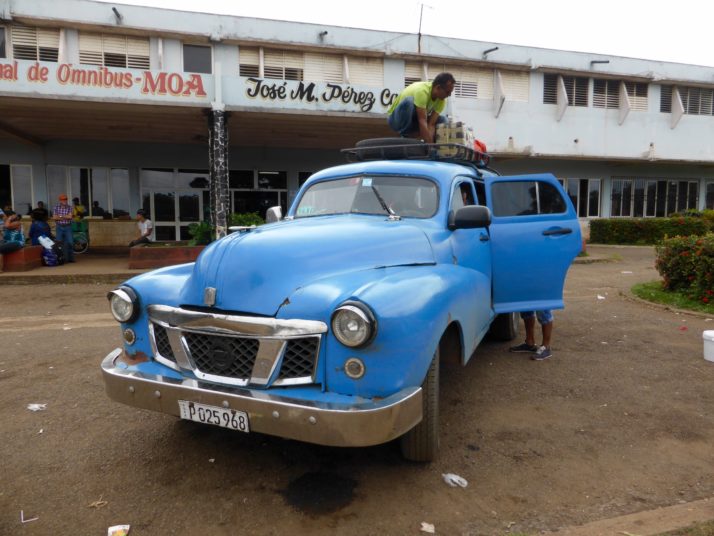 Our large bags were stowed on the roof
Our large bags were stowed on the roof
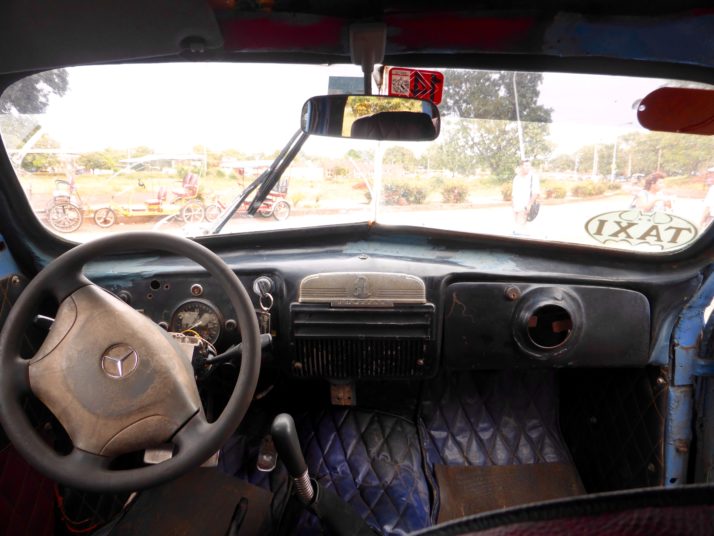 Our colectivo taxi from Moa to Holguin was a very old Pontiac (with a slightly newer Mercedes steering wheel!)
Our colectivo taxi from Moa to Holguin was a very old Pontiac (with a slightly newer Mercedes steering wheel!)
The road between Moa and Holguin is in a much better state of repair and we arrived in Holguin at 15:00 (a journey time of 2.75 hours) at the Intermunicipal Bus station on Avenida de los Libertadores, near the baseball stadium.
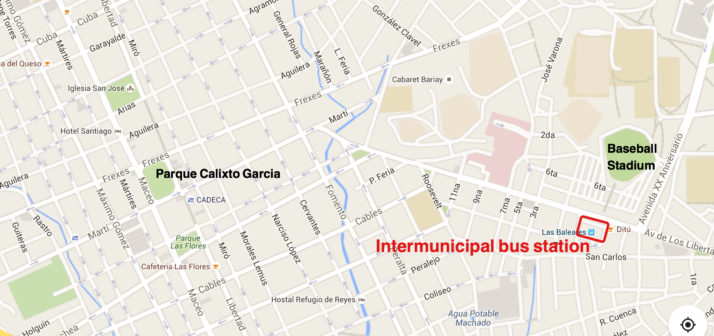 Intermunicipal Bus station in Holguin
Intermunicipal Bus station in Holguin
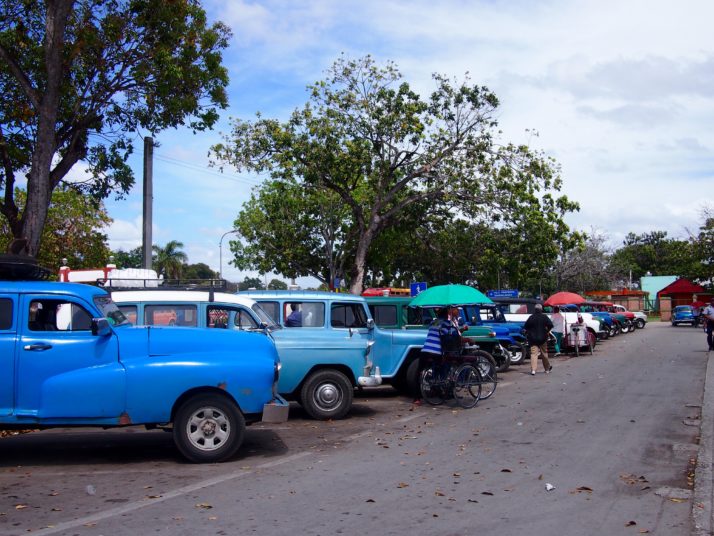 Colectivo taxis outside the Intermunicipal Bus station in Holguin
Colectivo taxis outside the Intermunicipal Bus station in Holguin
There are lots of local taxis and bici-taxis hanging around to take you on to your destination, or it’s roughly a 1.5km walk from here to Parque Calixto Garcia in the centre of town.
Another option to get from Baracoa to Holguin would be to arrange a tourist colectivo through your casa particular – we were quoted 30CUC per person based on a car with 4 passengers and our casa owner said he could ring around to find others who wanted to share the journey – obviously this would be much faster as there would be no hanging around at bus stations and it would probably also take you directly to your destination in Holguin.
| Transport type (Baracoa to Holguin) | Total price per person (CUC) | Estimated time incl waiting (hours) |
| Public transport (via Moa) | 14 | 7.75 |
| Viazul Bus (via Santiago) | 26 | 13 |
| Tourist colectivo taxi (via Moa) | 30 | ~5 |

 two year trip
two year trip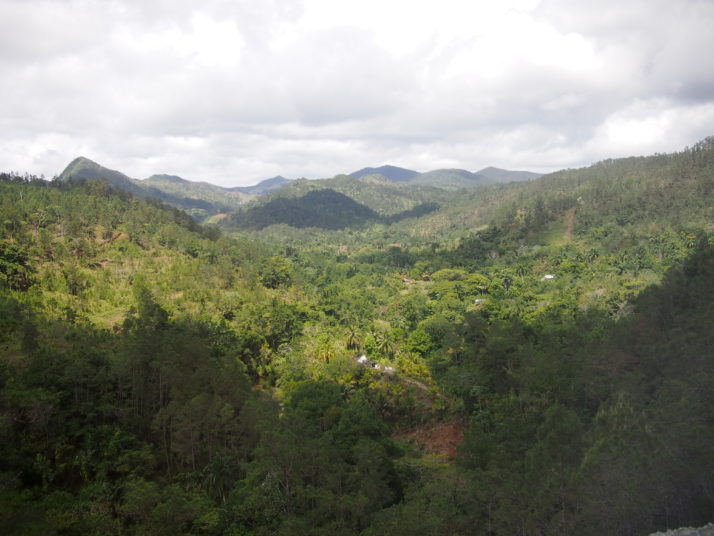 Spectacular views from the bus as we climbed through the mountains on our way to Baracoa along La Farola
Spectacular views from the bus as we climbed through the mountains on our way to Baracoa along La Farola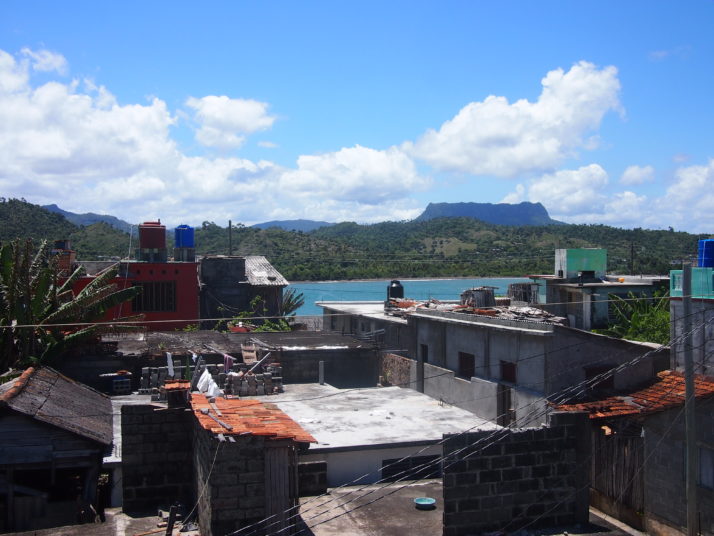 The table top mountain called El Yunque, the Anvil, is the symbol of Baracoa and is visible from many places in town including the roof terrace of our guesthouse.
The table top mountain called El Yunque, the Anvil, is the symbol of Baracoa and is visible from many places in town including the roof terrace of our guesthouse.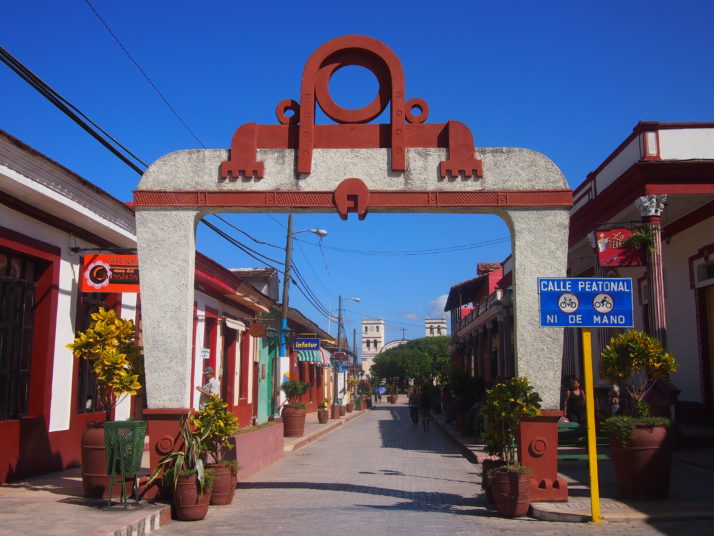 Looking along Baracoa’s walking street towards the cathedral
Looking along Baracoa’s walking street towards the cathedral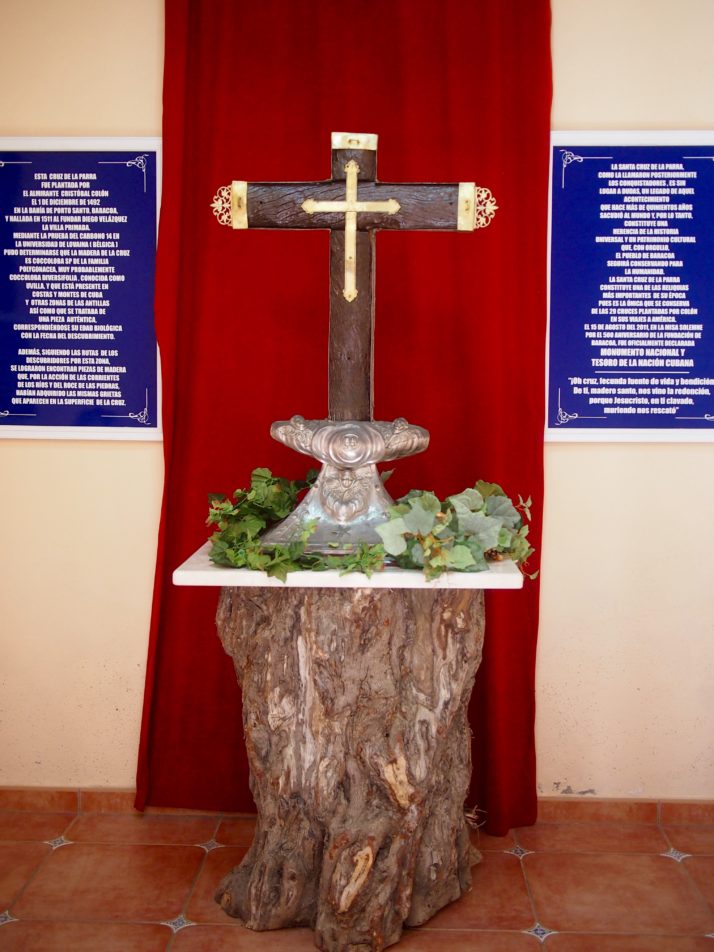 The Cruz de la Parra has been carbon dated to prove that it dates from the correct period but the wood is native Cuban and was not carried from Europe by Columbus as legend has it
The Cruz de la Parra has been carbon dated to prove that it dates from the correct period but the wood is native Cuban and was not carried from Europe by Columbus as legend has it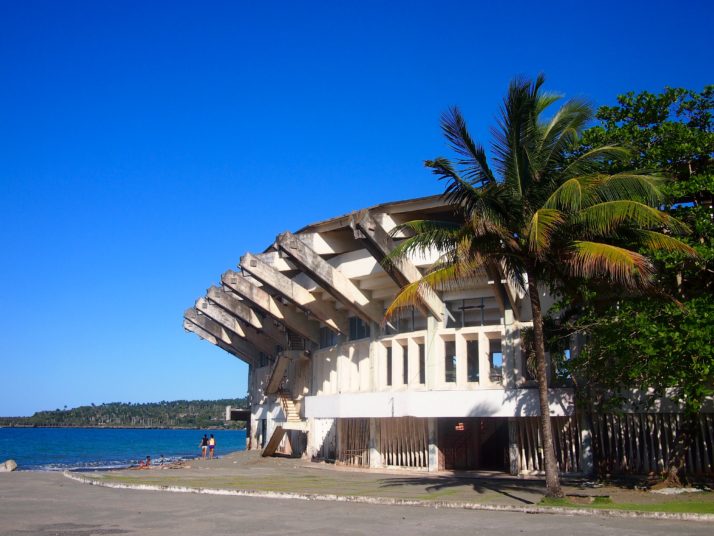 Baseball is Cuba’s national sport but its stadium was host to football practice when we poked our noses in
Baseball is Cuba’s national sport but its stadium was host to football practice when we poked our noses in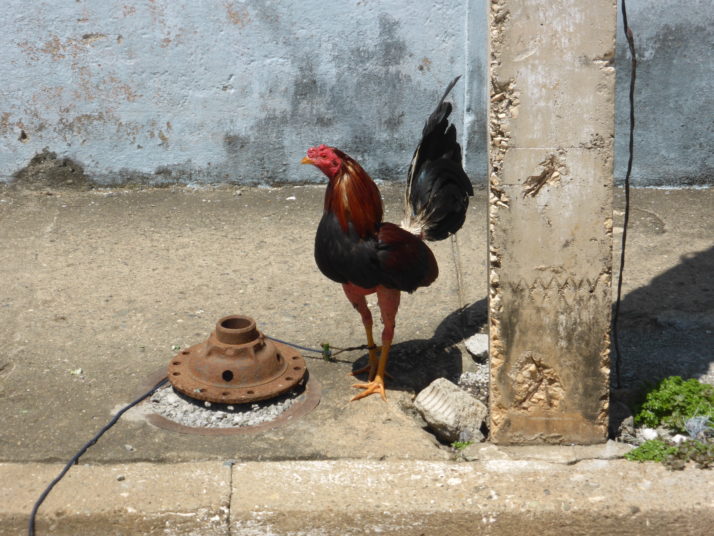 Cockfighting is a popular sport in Cuba judging by the number of cockerels we saw on a short walk through Baracoa’s streets
Cockfighting is a popular sport in Cuba judging by the number of cockerels we saw on a short walk through Baracoa’s streets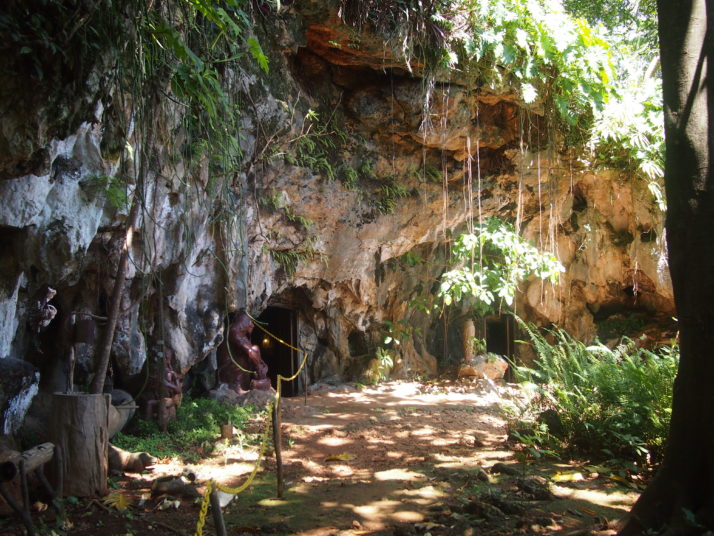 The entrance to Baracoa’s Museum of Archaeology
The entrance to Baracoa’s Museum of Archaeology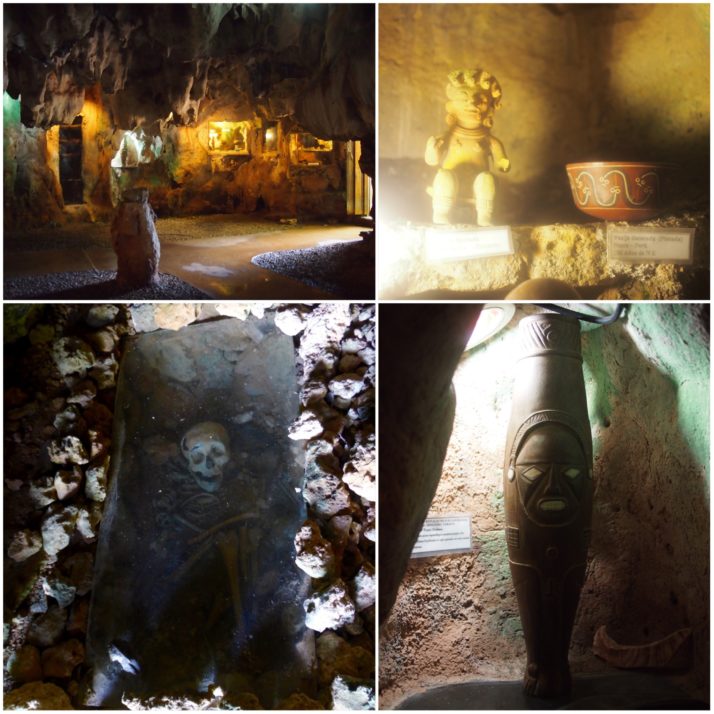 Museum of Archaeology (clockwise from top left): display cases inside the cave; Taíno artefacts; a replica of the Ídolo de Tabaco, one of the most important Taíno finds in the Caribbean; burial chamber
Museum of Archaeology (clockwise from top left): display cases inside the cave; Taíno artefacts; a replica of the Ídolo de Tabaco, one of the most important Taíno finds in the Caribbean; burial chamber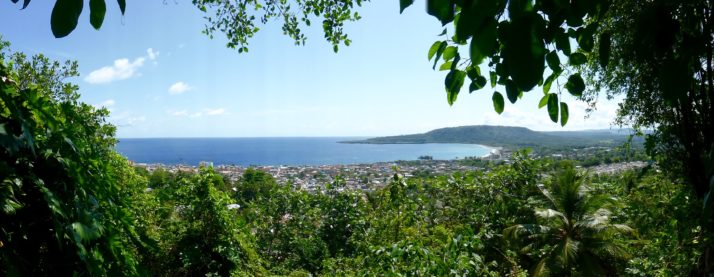 The viewpoint above the museum provides a reward for the uphill climb
The viewpoint above the museum provides a reward for the uphill climb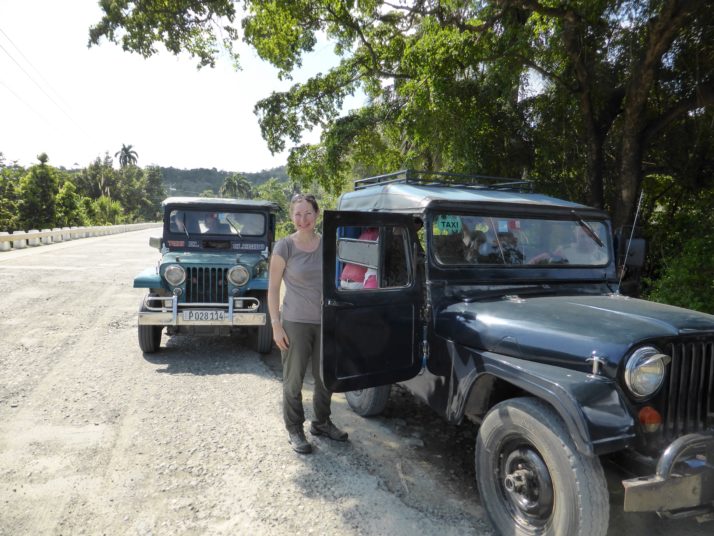 Stretching our legs during a brief pause in the drive to Humboldt National Park
Stretching our legs during a brief pause in the drive to Humboldt National Park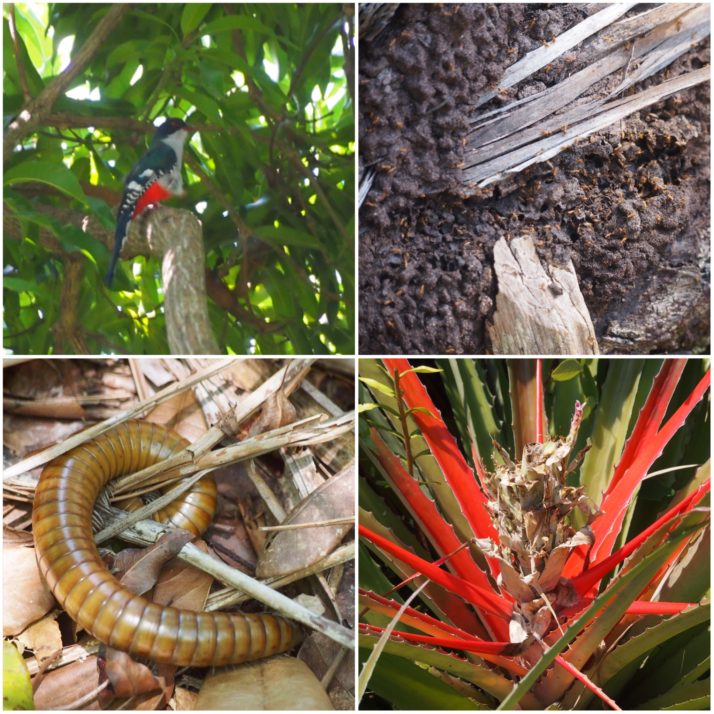 Flora and fauna in Humboldt National Park (clockwise from top left): Cuba’s national bird, the Tocororo; termites; the colourful Rat Pineapple is related to the normal pineapple but doesn’t produce an edible fruit; this huge millipede was about 25cm long and thicker than my thumb
Flora and fauna in Humboldt National Park (clockwise from top left): Cuba’s national bird, the Tocororo; termites; the colourful Rat Pineapple is related to the normal pineapple but doesn’t produce an edible fruit; this huge millipede was about 25cm long and thicker than my thumb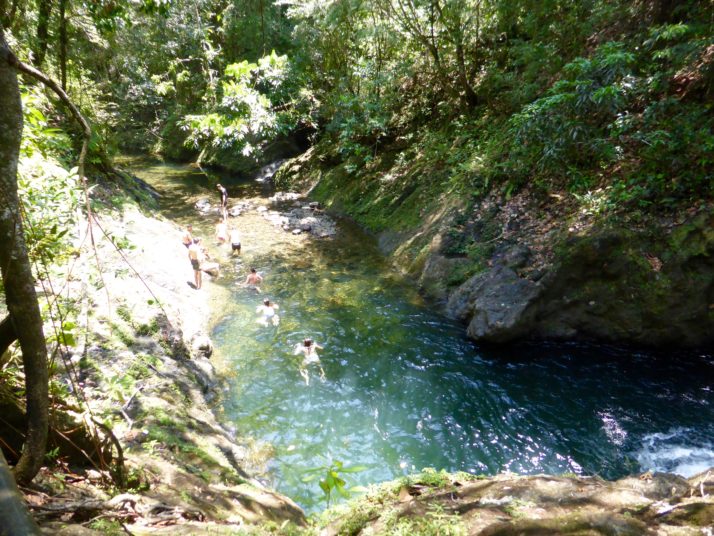 Some of our group swimming down the river to join us at the lunch spot
Some of our group swimming down the river to join us at the lunch spot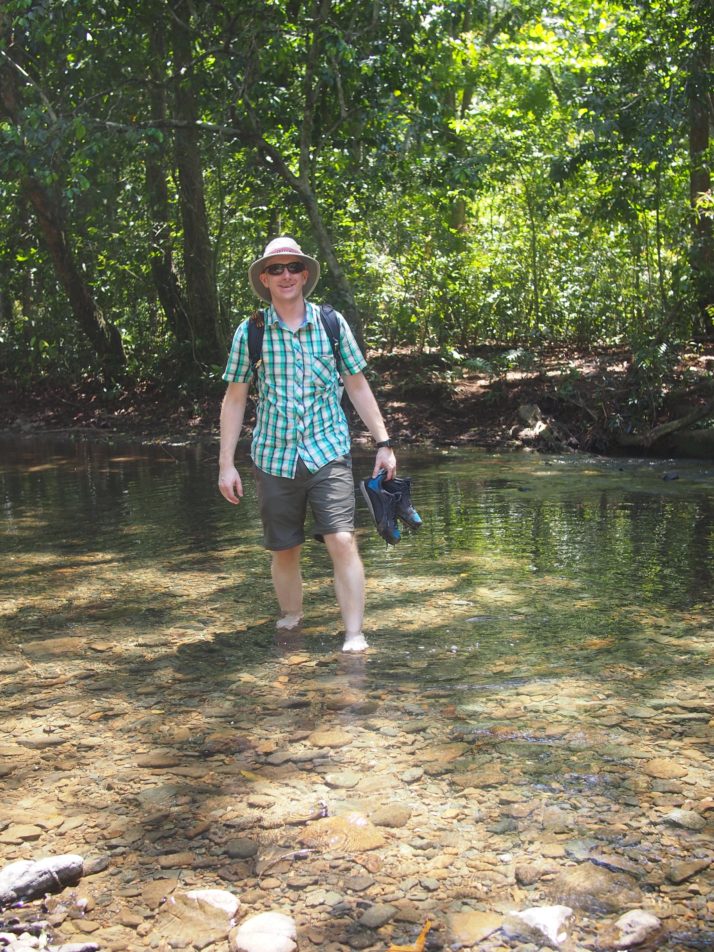 After lunch we had to cross the river 8 times to get back to where we’d left the jeeps. I was glad that I’d carried my flip-flops to cross the stony riverbed, Andrew had to do it barefoot.
After lunch we had to cross the river 8 times to get back to where we’d left the jeeps. I was glad that I’d carried my flip-flops to cross the stony riverbed, Andrew had to do it barefoot.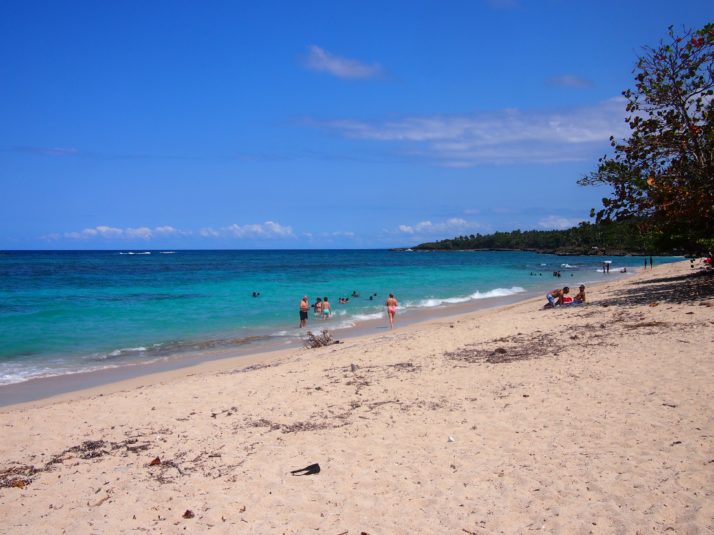 Playa Maguana, there’s even a guy who’ll bring you a drink direct to your beach towel
Playa Maguana, there’s even a guy who’ll bring you a drink direct to your beach towel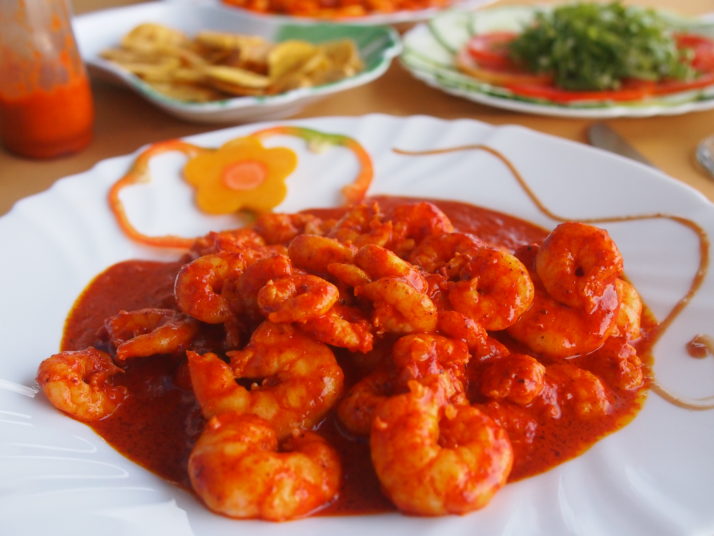 Prawns with the Baracoan sauce made from coconut milk, tomatoes, garlic and spices
Prawns with the Baracoan sauce made from coconut milk, tomatoes, garlic and spices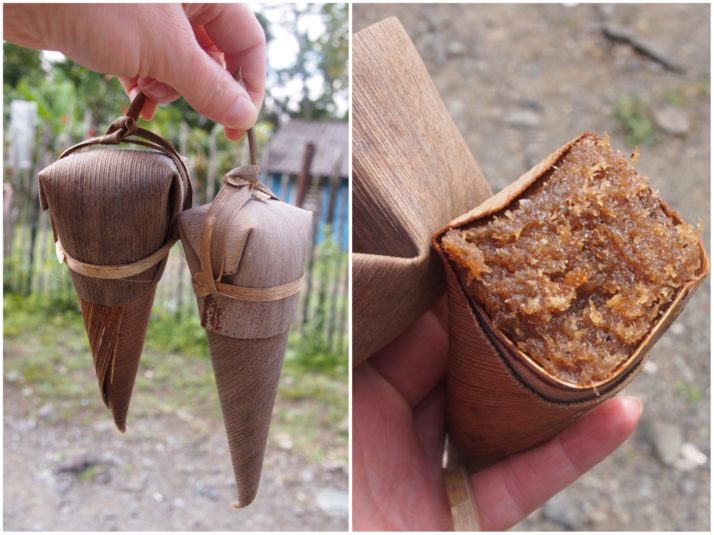 Peeling a cucurucho
Peeling a cucurucho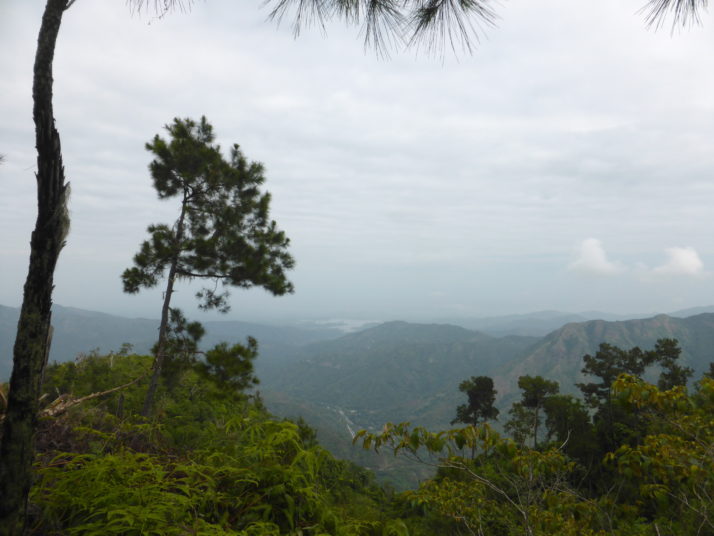
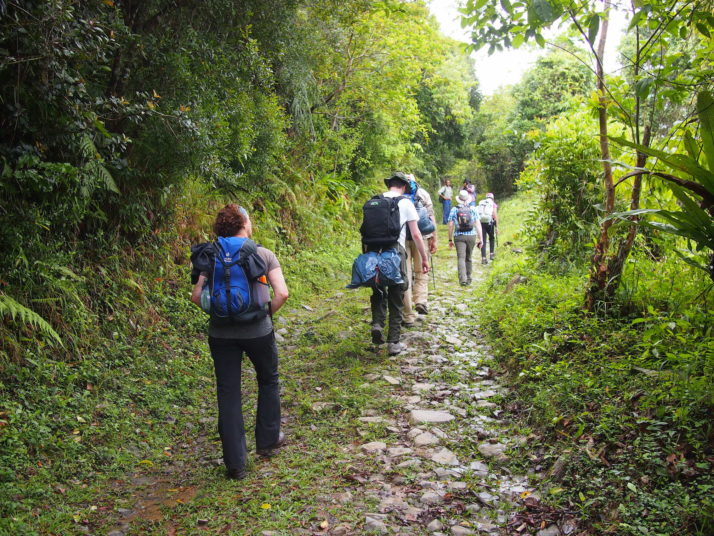

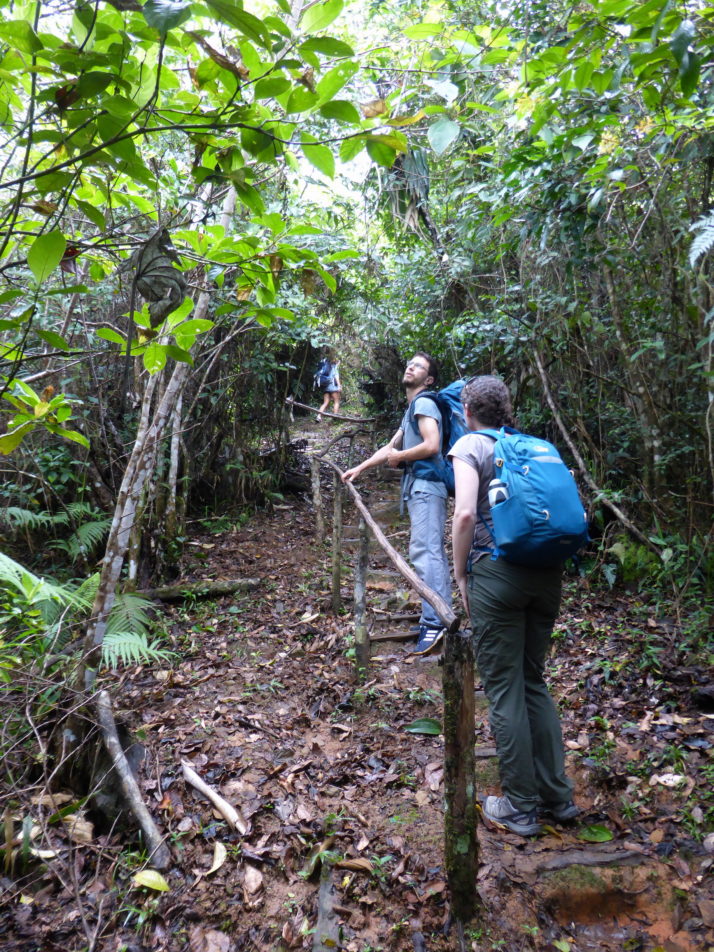
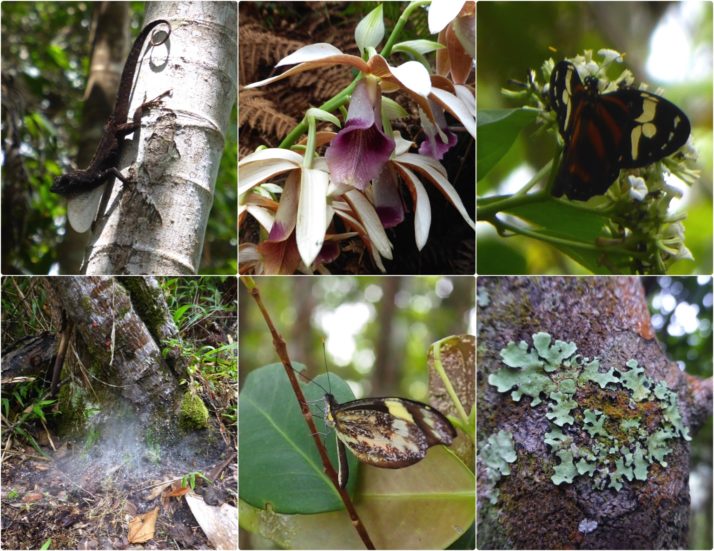
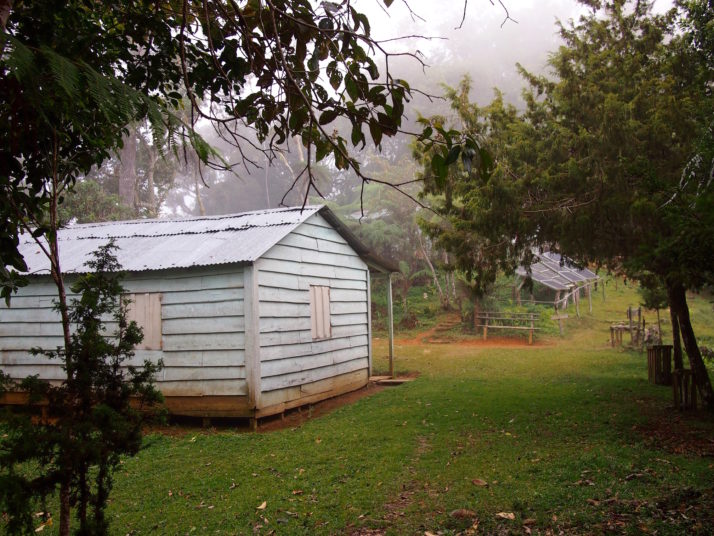
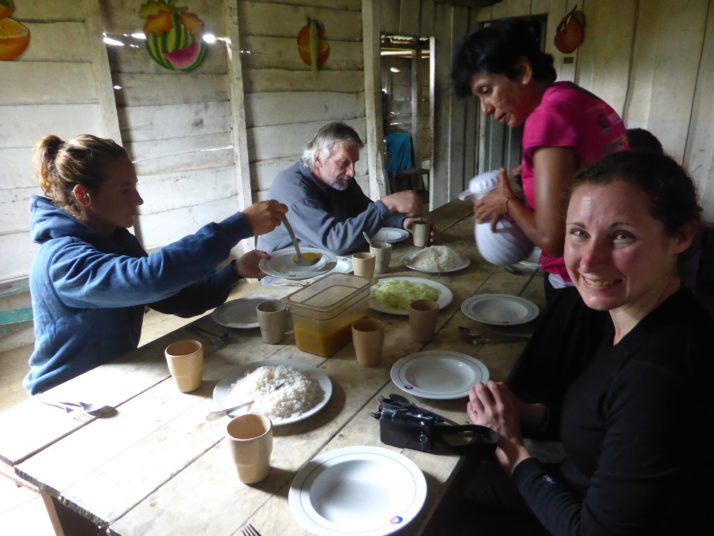
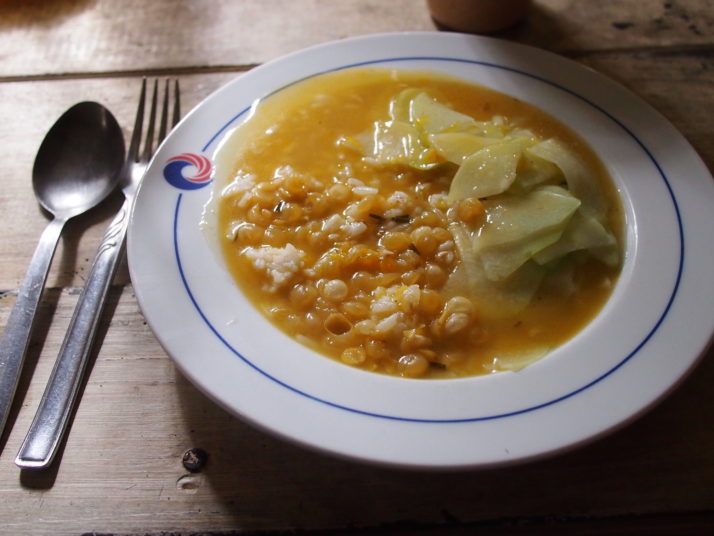
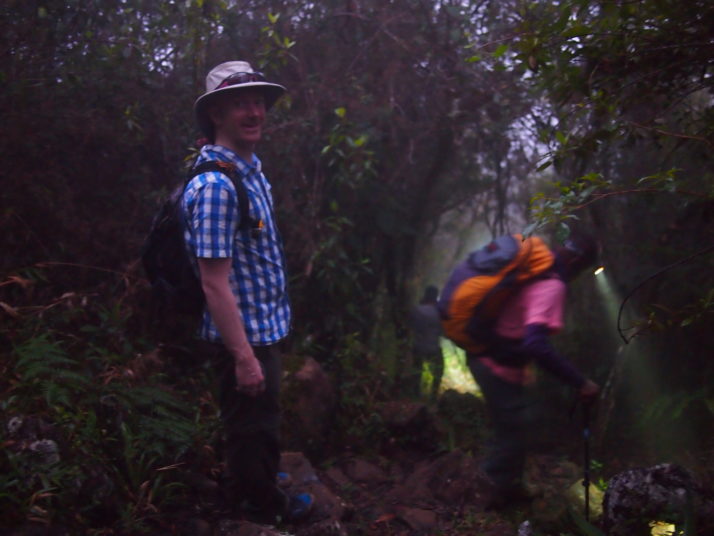
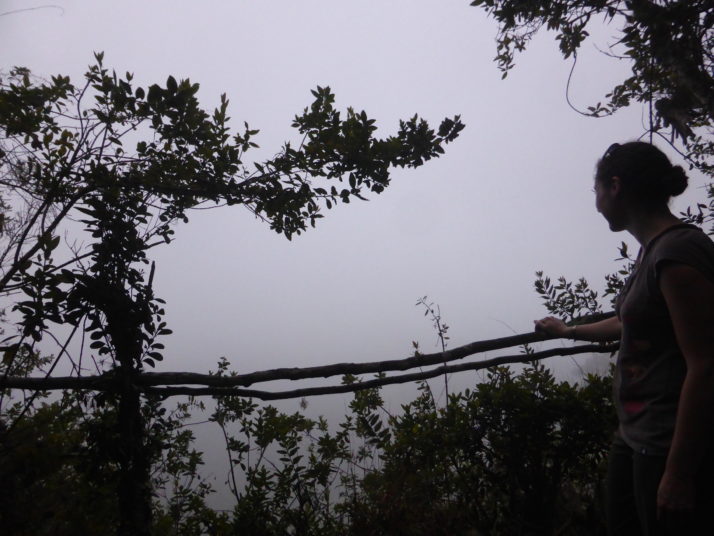
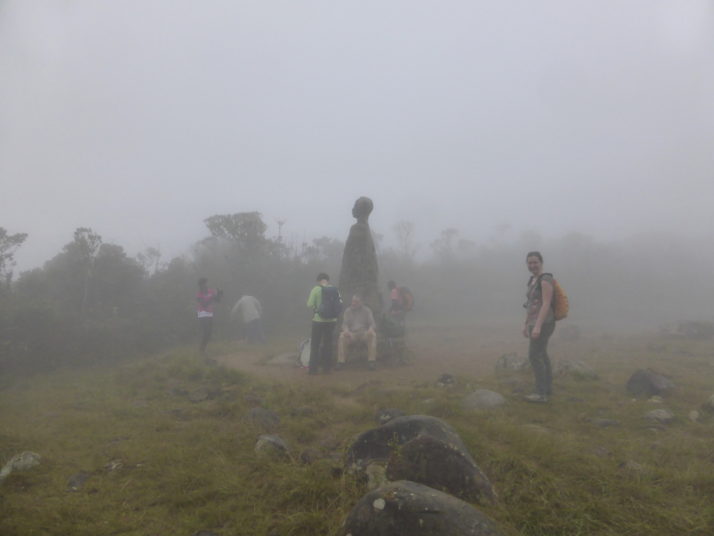
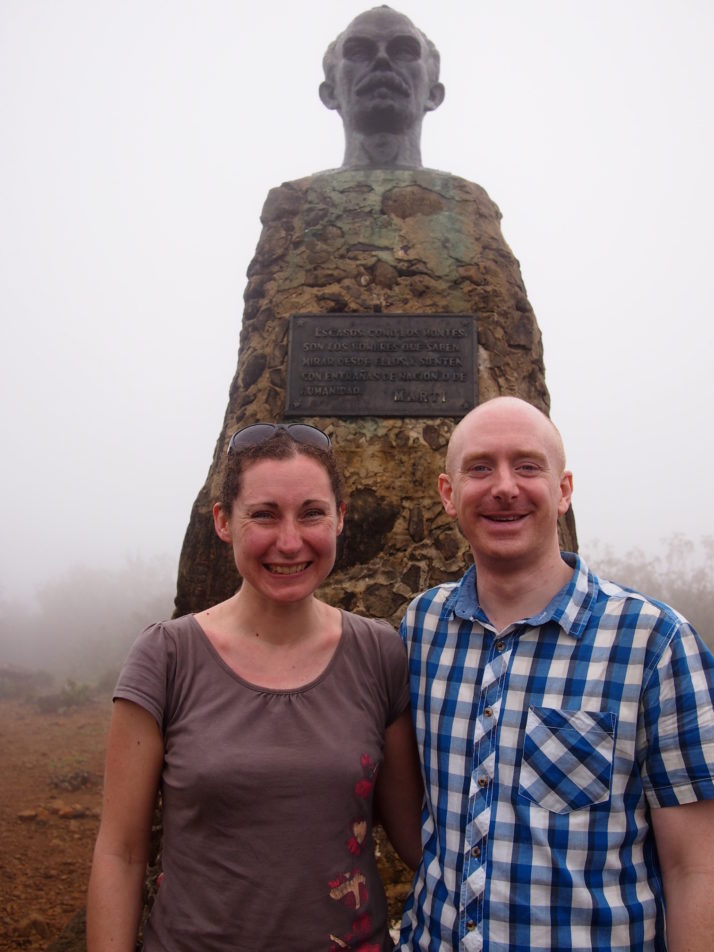
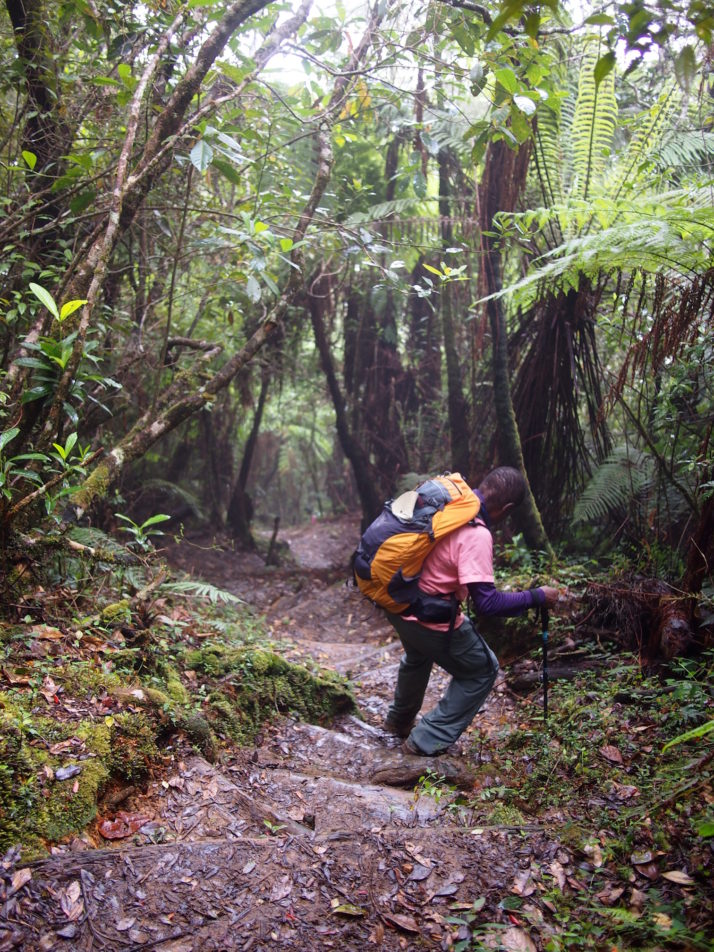
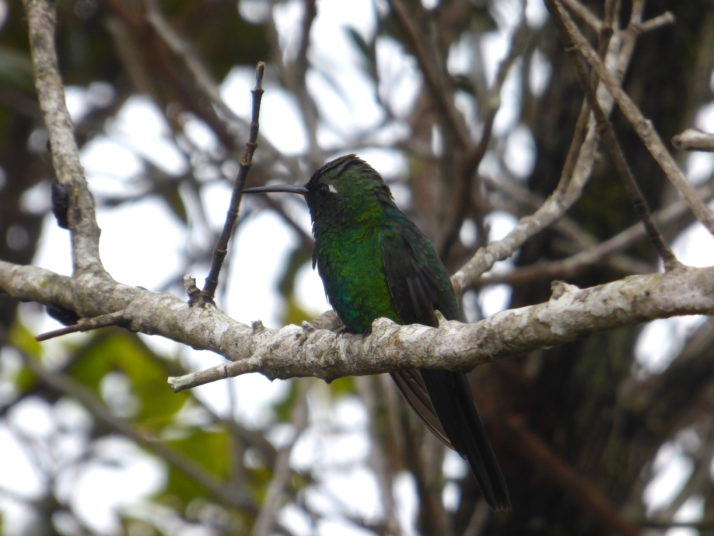
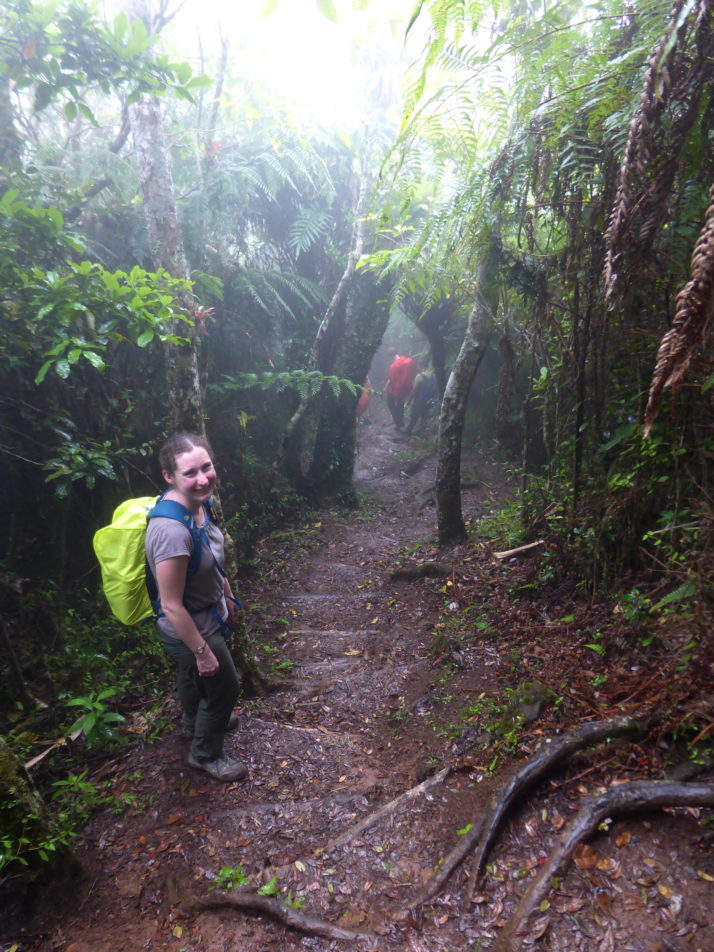
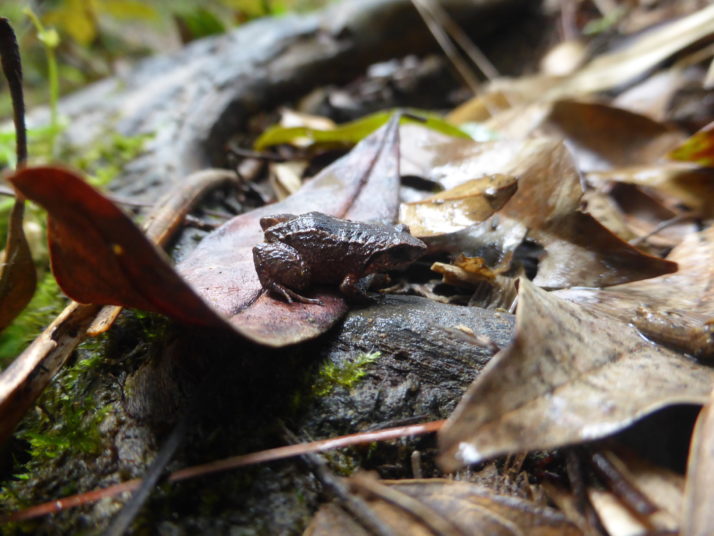
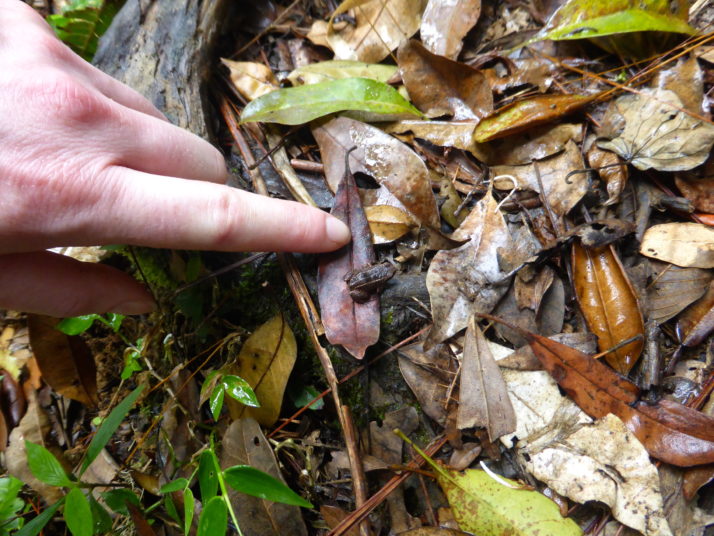
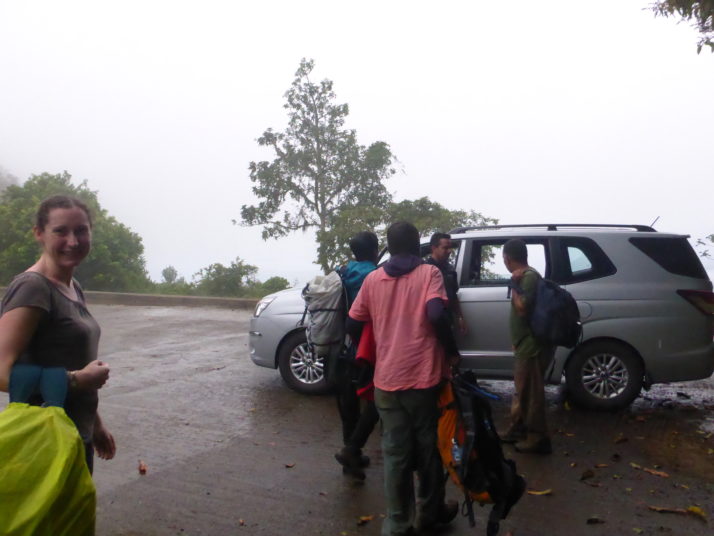
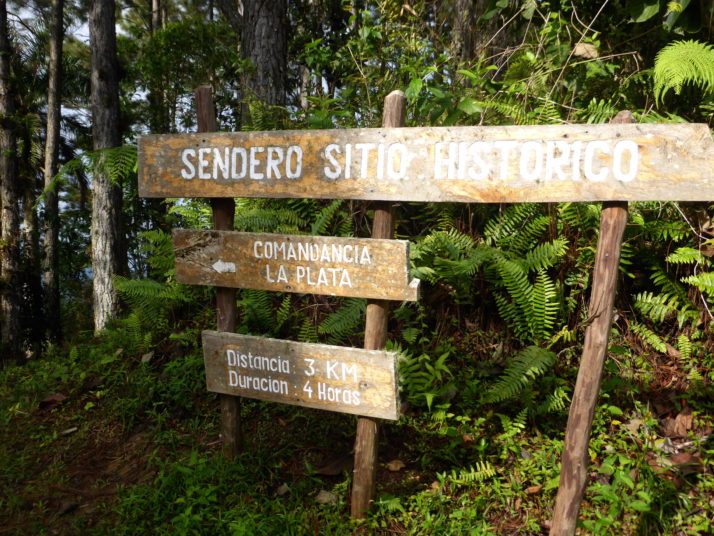
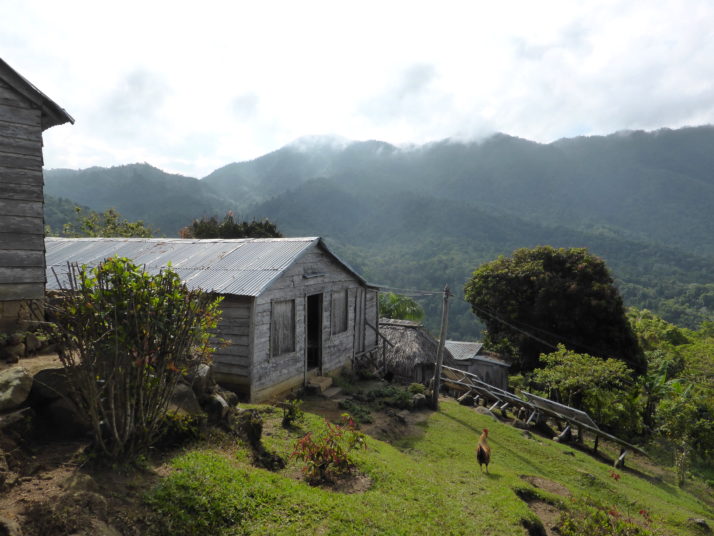
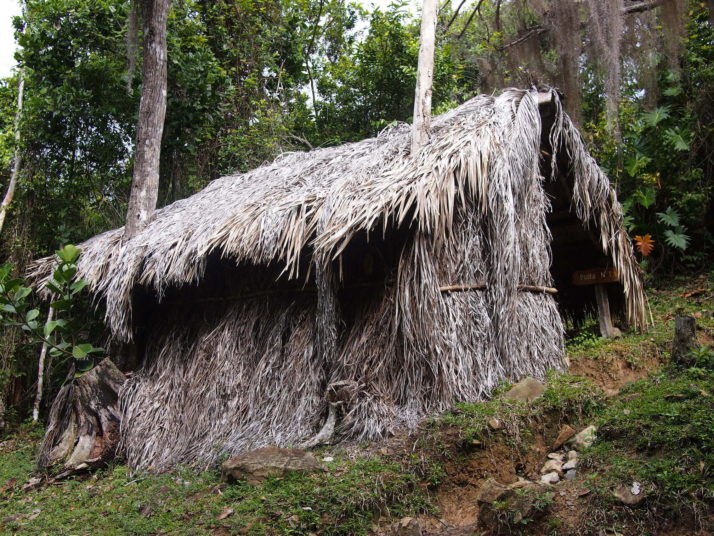
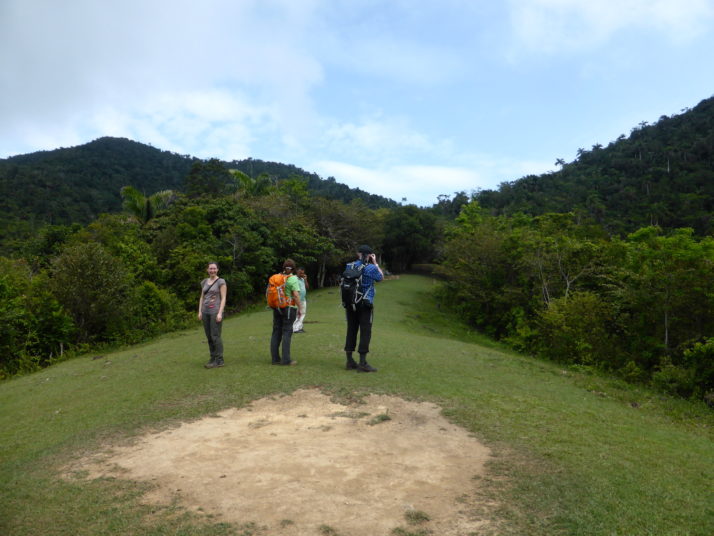
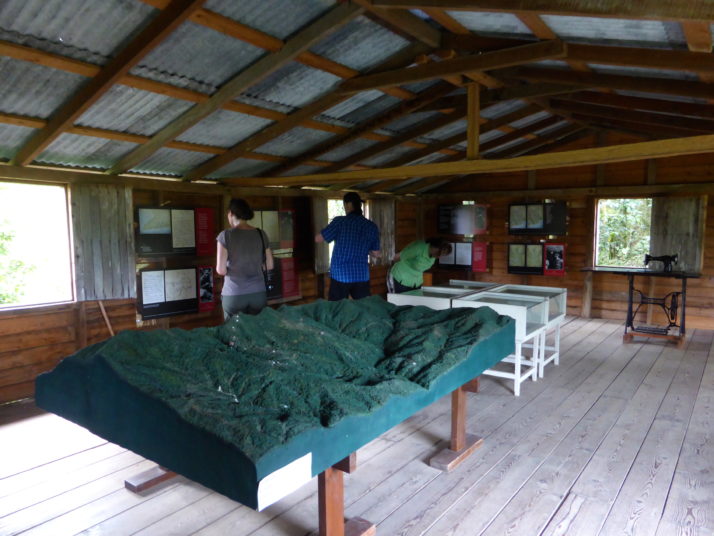
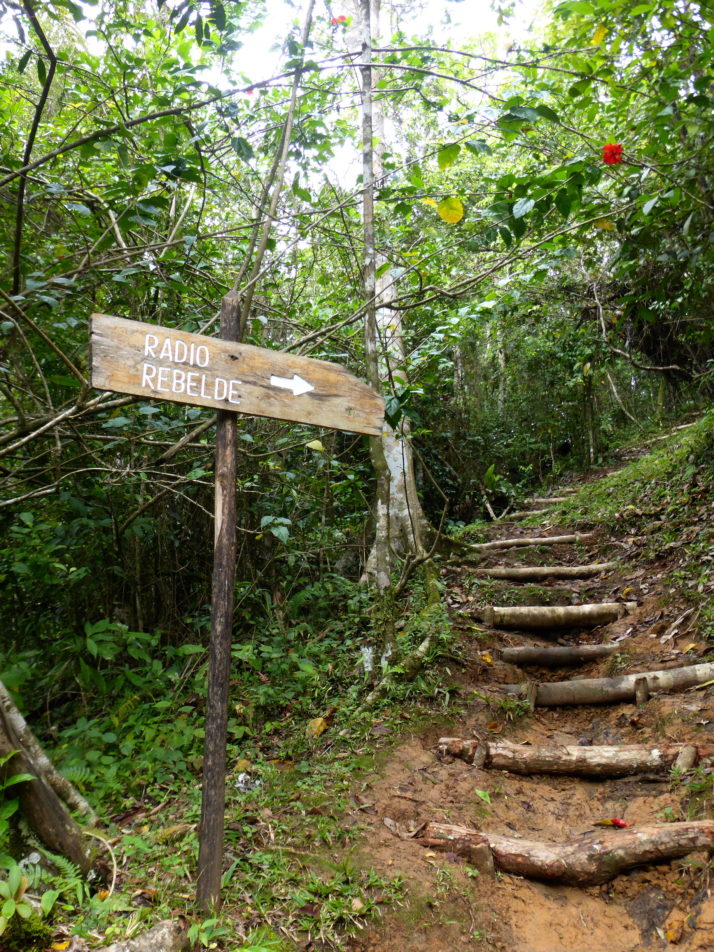
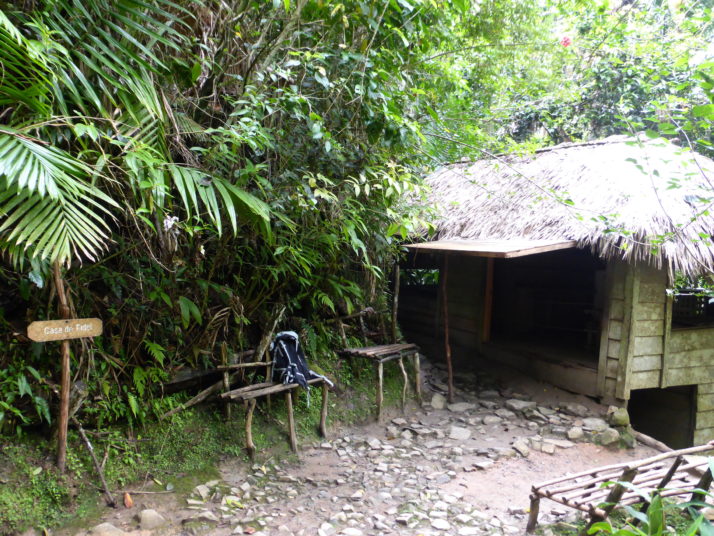
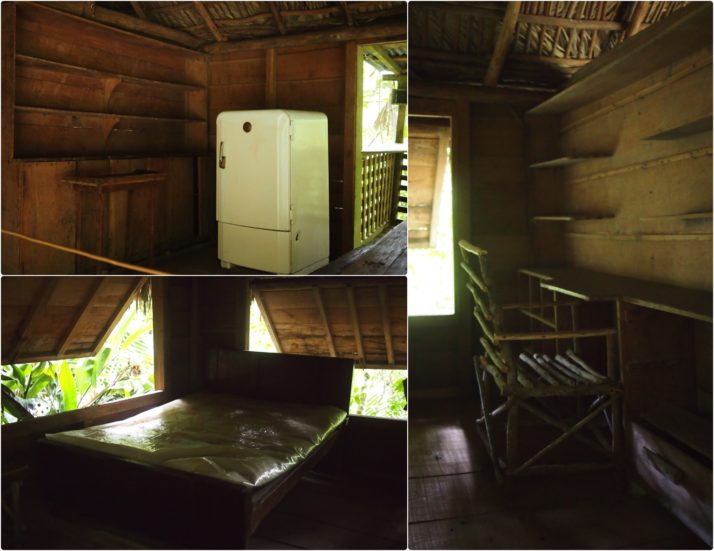
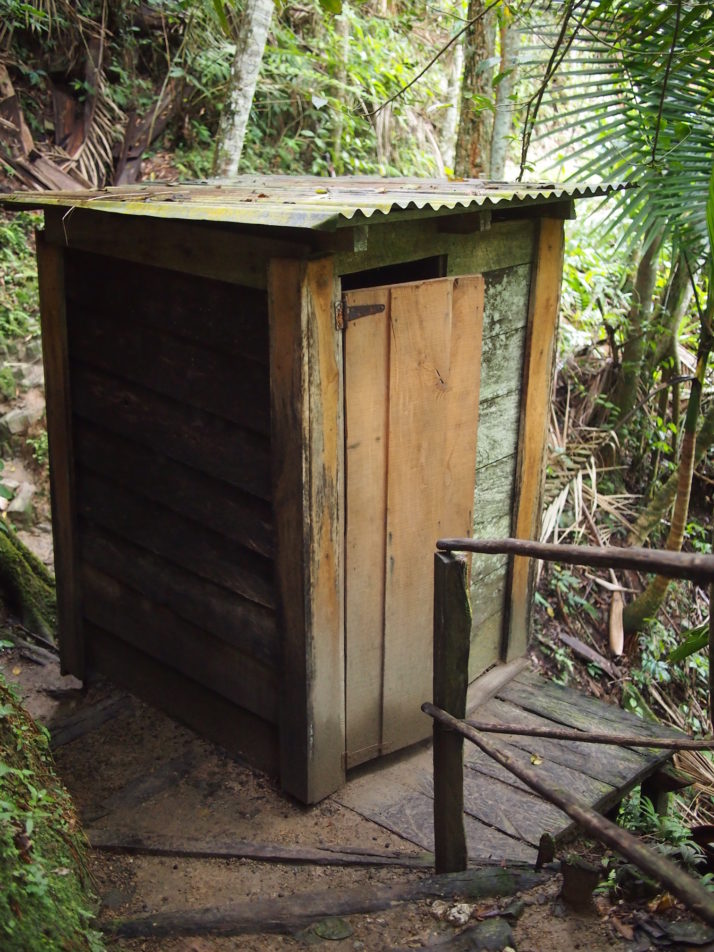
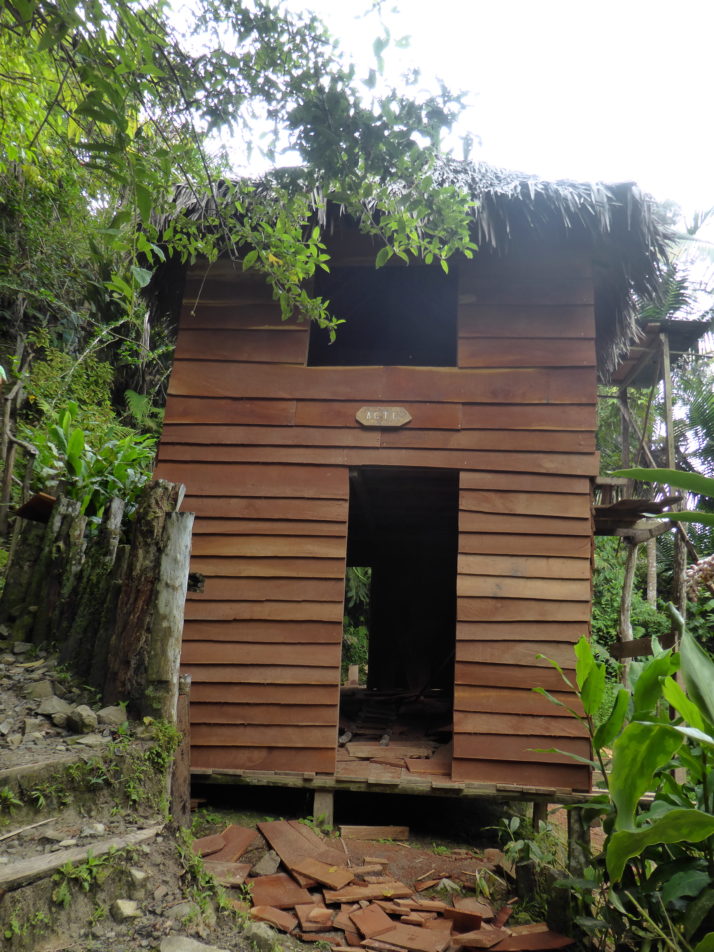
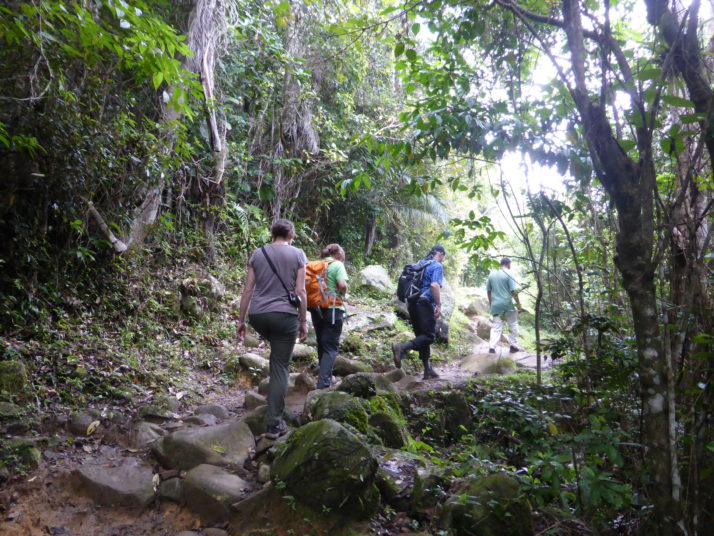
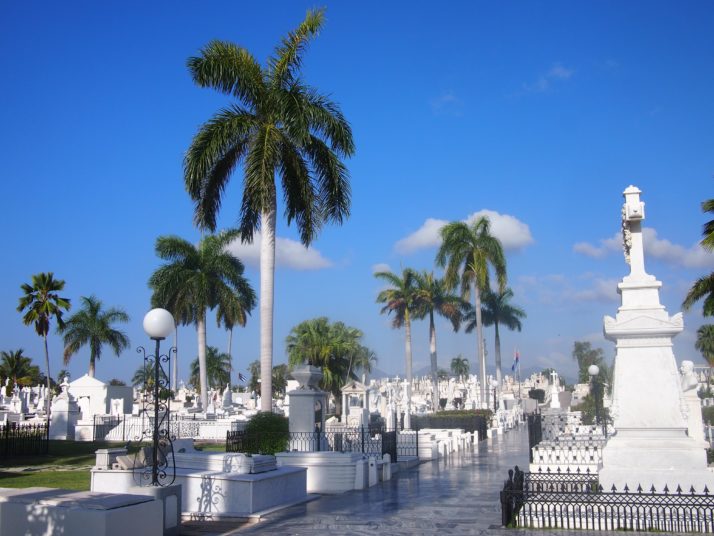 The first cemetery that we visited was Santa Ifigenia in Santiago de Cuba, a sea of white marble and palm trees against the blue Caribbean sky
The first cemetery that we visited was Santa Ifigenia in Santiago de Cuba, a sea of white marble and palm trees against the blue Caribbean sky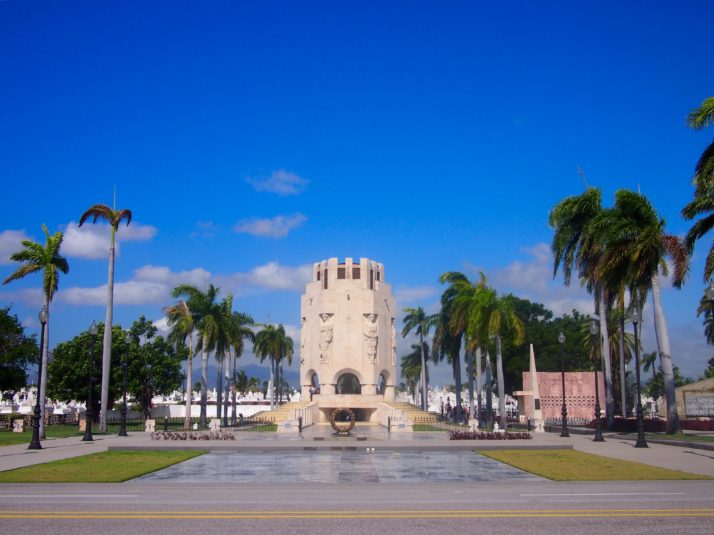 Santa Ifigenia cemetery is the resting place of
Santa Ifigenia cemetery is the resting place of 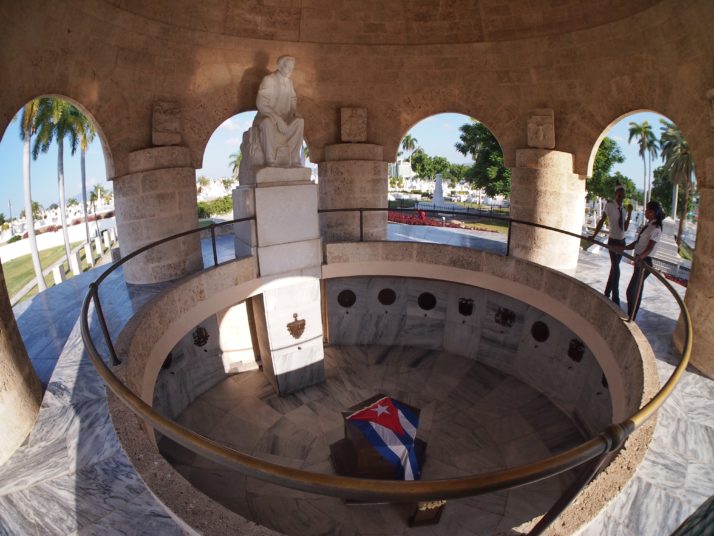 Inside José Martí’s mausoleum, the casket is draped in a Cuban flag and catches daily shafts of sunlight in response to a line in one of his poems about being buried with his visage facing the sun
Inside José Martí’s mausoleum, the casket is draped in a Cuban flag and catches daily shafts of sunlight in response to a line in one of his poems about being buried with his visage facing the sun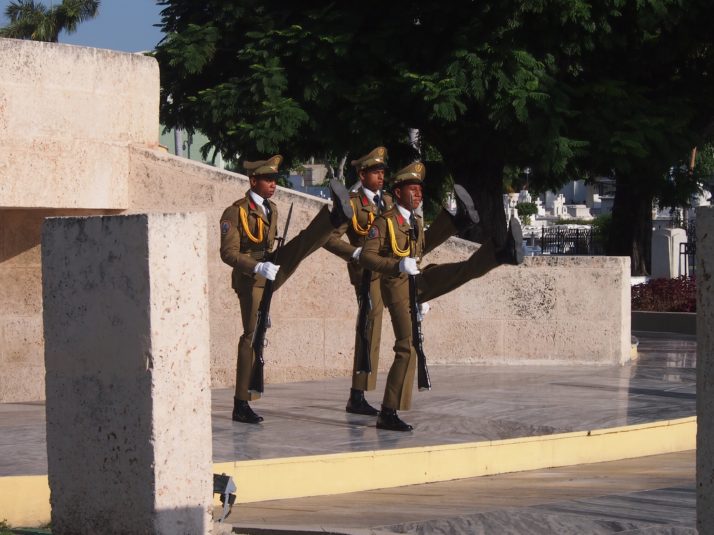 There is a twice hourly changing of the guard ceremony at José Martí’s tomb. At 8.30am we were the only ones there, by 10.30am the audience lining the path was large.
There is a twice hourly changing of the guard ceremony at José Martí’s tomb. At 8.30am we were the only ones there, by 10.30am the audience lining the path was large.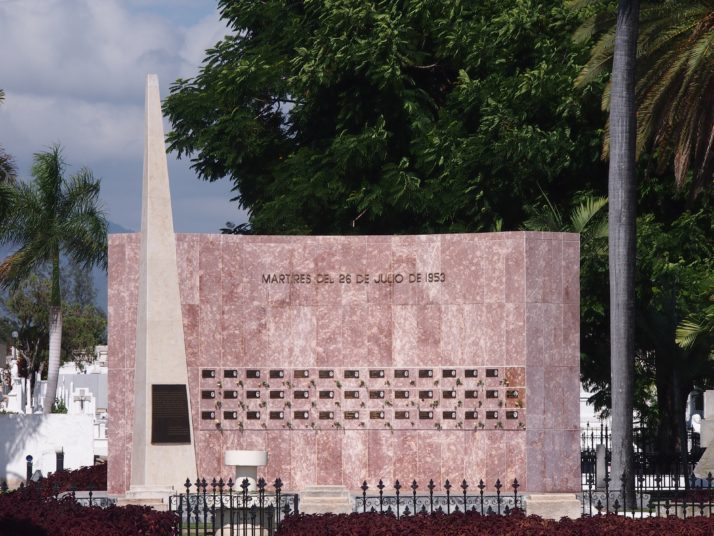 All the cemeteries we visited had mausoleums for soldiers killed during the revolutionary fighting, this one honours those who lost their lives during the Moncada Barracks attacks
All the cemeteries we visited had mausoleums for soldiers killed during the revolutionary fighting, this one honours those who lost their lives during the Moncada Barracks attacks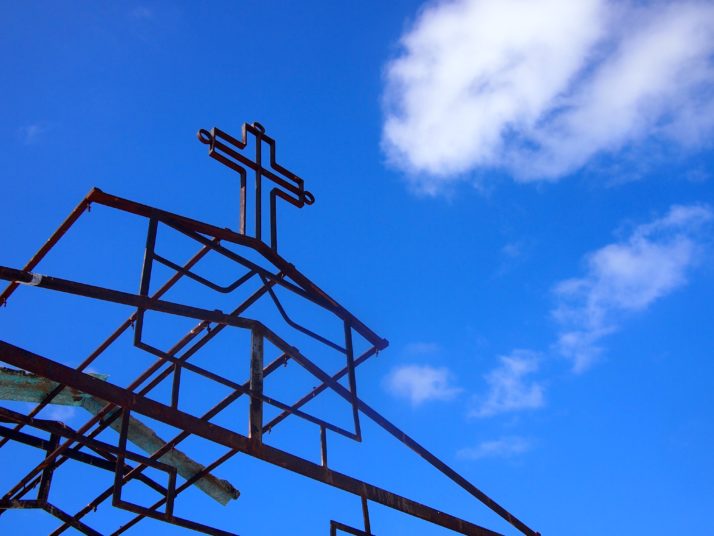 Most of the gravestones at Santa Ifigenia cemetery were white marble but there were a few exceptions like this metal canopy with a cross
Most of the gravestones at Santa Ifigenia cemetery were white marble but there were a few exceptions like this metal canopy with a cross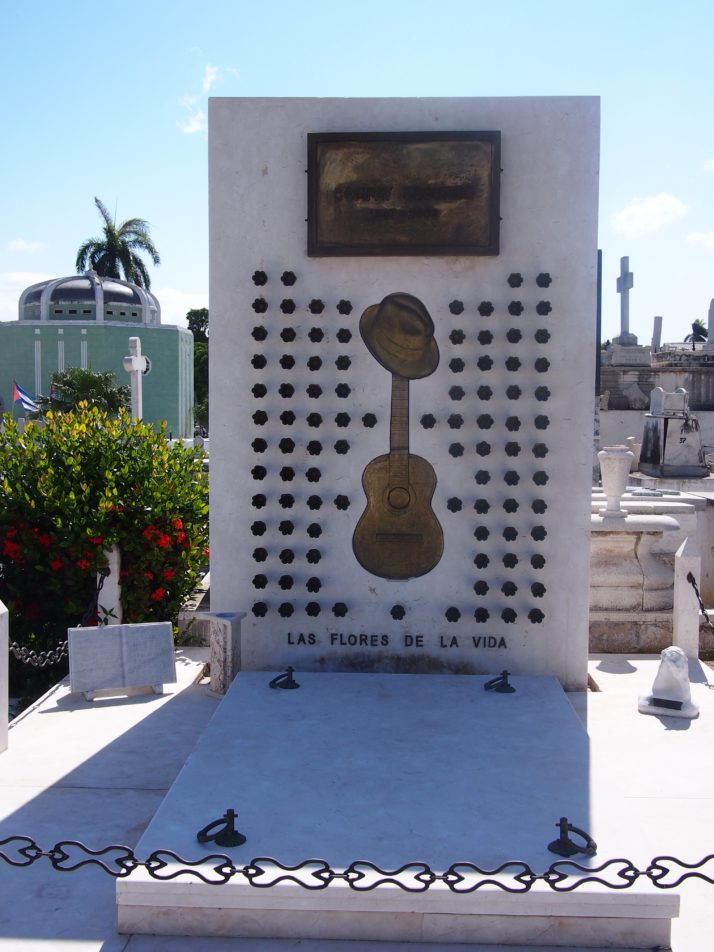
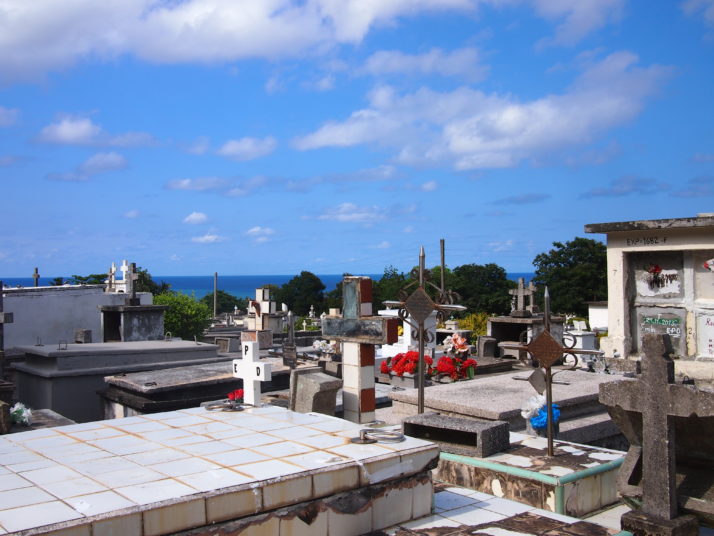 The cemetery in Baracoa was much less grand than the one in Santiago but it had a beautiful setting overlooking the sea
The cemetery in Baracoa was much less grand than the one in Santiago but it had a beautiful setting overlooking the sea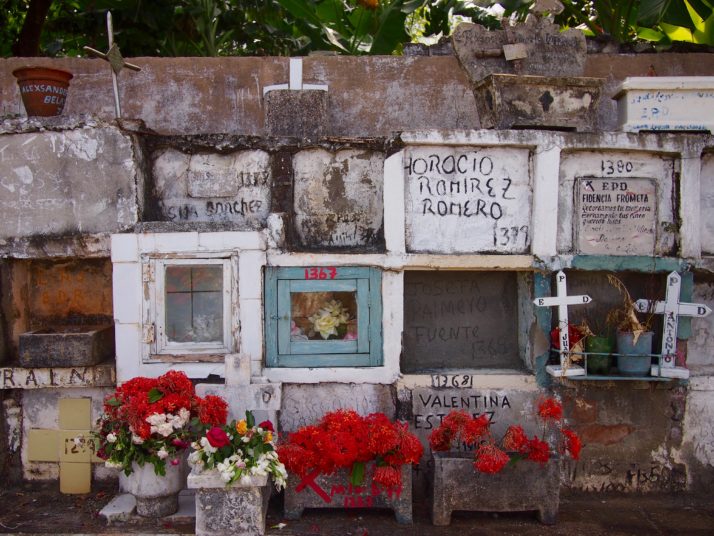 Every cemetery we visited had huge blocks containing square niches, presumably for ashes (there was usually a crematorium building hidden in a back corner as well). Some were simply decorated with the deceased’s name either handpainted or scratched into the wet cement while others had professional plaques, flowers or other decorations
Every cemetery we visited had huge blocks containing square niches, presumably for ashes (there was usually a crematorium building hidden in a back corner as well). Some were simply decorated with the deceased’s name either handpainted or scratched into the wet cement while others had professional plaques, flowers or other decorations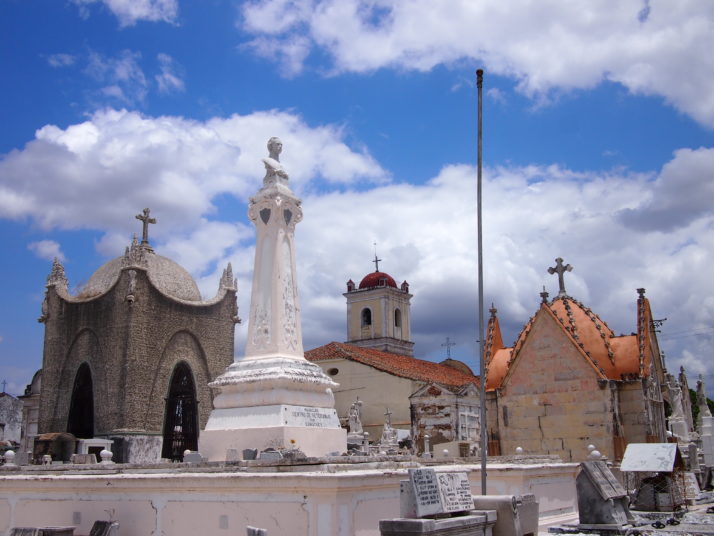 The cemetery in Camagüey was one of my favourites and with barely any other visitors (and no other tourists) we were free to have a good look around. These grand tombs are close to the entrance near the Iglesia de San Cristo de Buen Viaje (Church of St Christopher).
The cemetery in Camagüey was one of my favourites and with barely any other visitors (and no other tourists) we were free to have a good look around. These grand tombs are close to the entrance near the Iglesia de San Cristo de Buen Viaje (Church of St Christopher).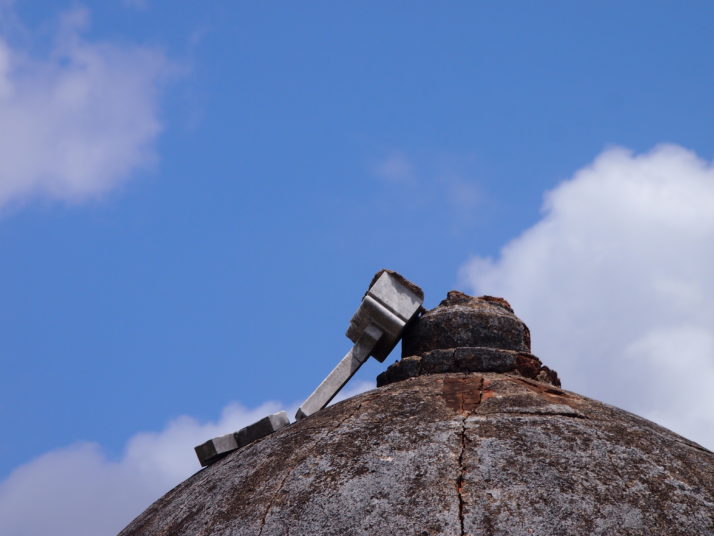 Further into the cemetery more dilapidation was obvious such as this fallen cross
Further into the cemetery more dilapidation was obvious such as this fallen cross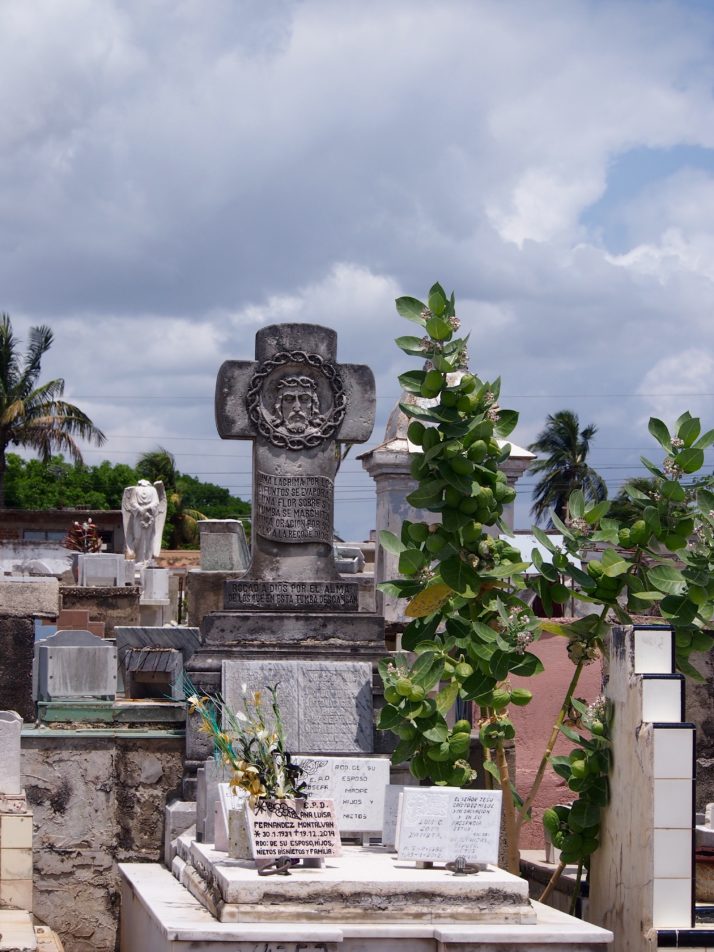 Plots often seemed to contain whole families with a crowd of plaques on top of the grave, each carrying a different name
Plots often seemed to contain whole families with a crowd of plaques on top of the grave, each carrying a different name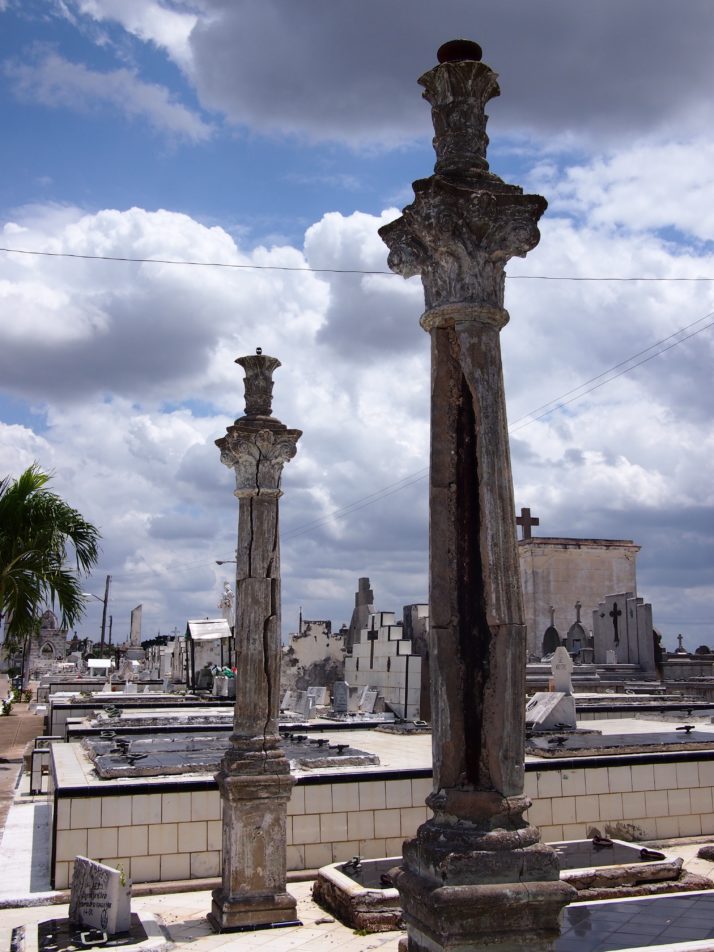 Columns that look as if they’re about to fall apart in Camagüey
Columns that look as if they’re about to fall apart in Camagüey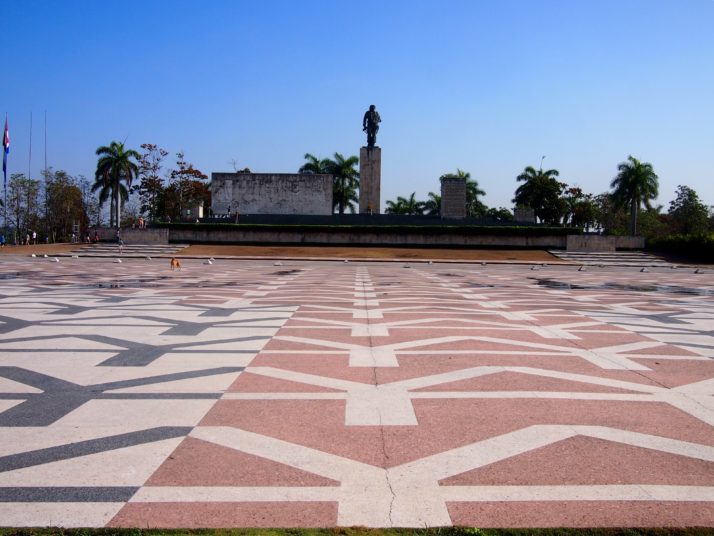 In Santa Clara we didn’t visit the cemetery but the city is home to the most famous mausoleum in the country which contains the remains of Ernesto ‘Che’ Guevara and 16 of the 37 fighters who were killed alongside him in Bolivia. Underneath the statue is a peaceful room of remembrance and an interesting museum documenting Che’s life.
In Santa Clara we didn’t visit the cemetery but the city is home to the most famous mausoleum in the country which contains the remains of Ernesto ‘Che’ Guevara and 16 of the 37 fighters who were killed alongside him in Bolivia. Underneath the statue is a peaceful room of remembrance and an interesting museum documenting Che’s life.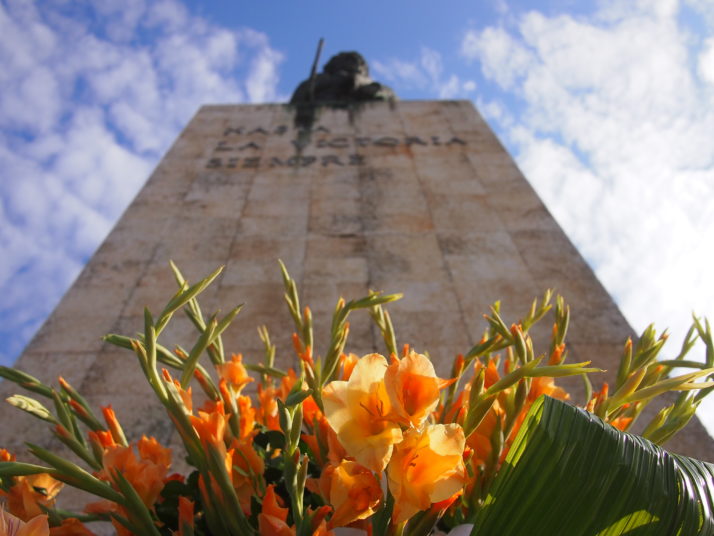 Fresh flowers are placed below the statue of Che each morning.
Fresh flowers are placed below the statue of Che each morning.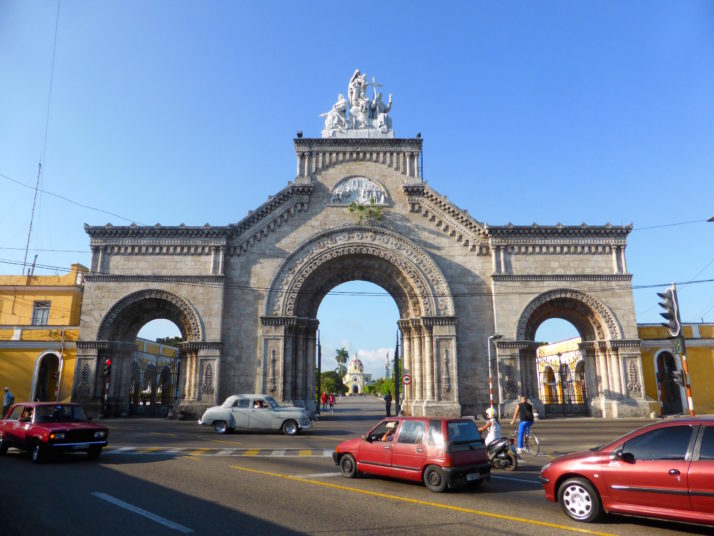 The Necrópolis Cristóbal Colón (Christopher Columbus cemetery) in Havana is enormous and worthy of this imposing entrance gate
The Necrópolis Cristóbal Colón (Christopher Columbus cemetery) in Havana is enormous and worthy of this imposing entrance gate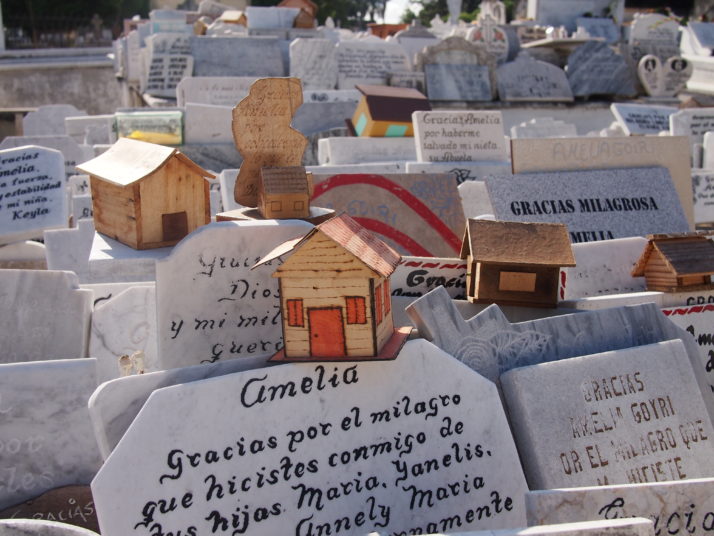 The most famous grave in the cemetery belongs to Amelia Goyri, also known as La Milagrosa or miracle-worker. She died in childbirth in 1901 and was buried with her son. The story goes that when the grave was opened some years late Amelia’s body was uncorrupted and the baby was found not at her feet but in her arms. Since then locals have prayed for her to help with their hopes for children, new houses, etc and now several nearby plots have been overtaken with thank you messages from thoses whose wishes have been fulfilled.
The most famous grave in the cemetery belongs to Amelia Goyri, also known as La Milagrosa or miracle-worker. She died in childbirth in 1901 and was buried with her son. The story goes that when the grave was opened some years late Amelia’s body was uncorrupted and the baby was found not at her feet but in her arms. Since then locals have prayed for her to help with their hopes for children, new houses, etc and now several nearby plots have been overtaken with thank you messages from thoses whose wishes have been fulfilled.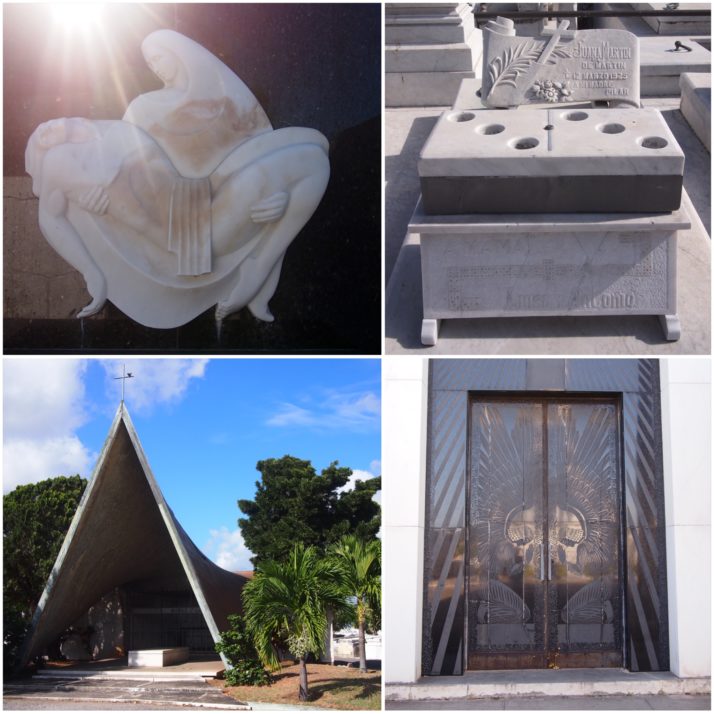 We enjoyed some of the modern graves in the Necrópolis Cristóbal Colón (clockwise from top left): a modern take on the Pietà by sculptor Rita Longa; according to the internet (!), Juana Martin died while playing dominoes; the glass doors on the pantheon of the Baró family were designed by Lalique; tomb of Nuñes Gálvez
We enjoyed some of the modern graves in the Necrópolis Cristóbal Colón (clockwise from top left): a modern take on the Pietà by sculptor Rita Longa; according to the internet (!), Juana Martin died while playing dominoes; the glass doors on the pantheon of the Baró family were designed by Lalique; tomb of Nuñes Gálvez But there is plenty of beautiful white marble as well
But there is plenty of beautiful white marble as well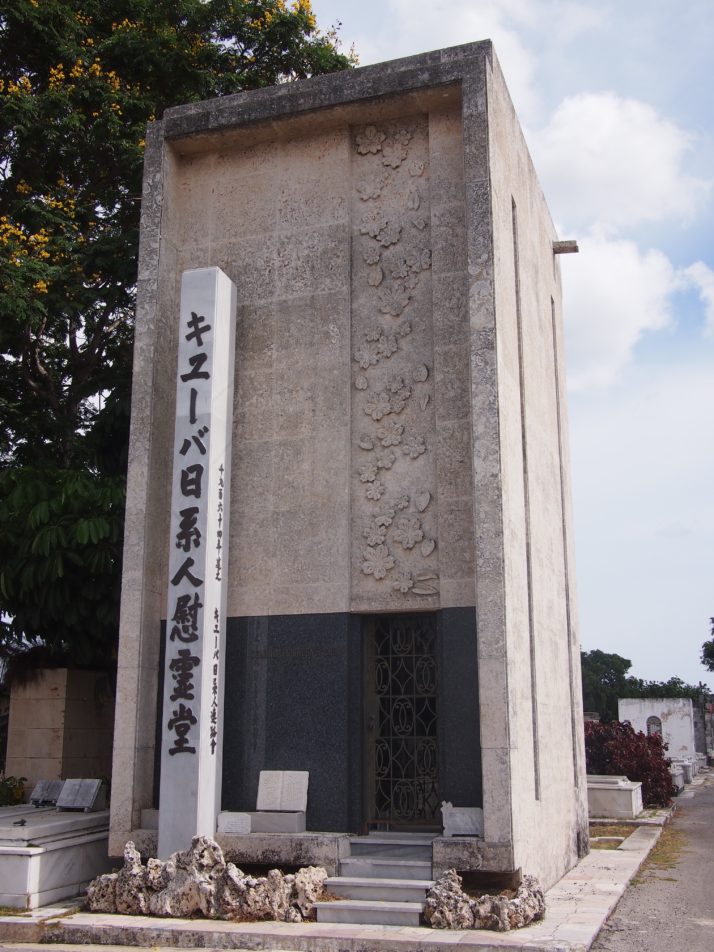 There were a number of mausoleums for societies like this one for the Japanese Colony of Cuba. Inside are walls of square niches.
There were a number of mausoleums for societies like this one for the Japanese Colony of Cuba. Inside are walls of square niches.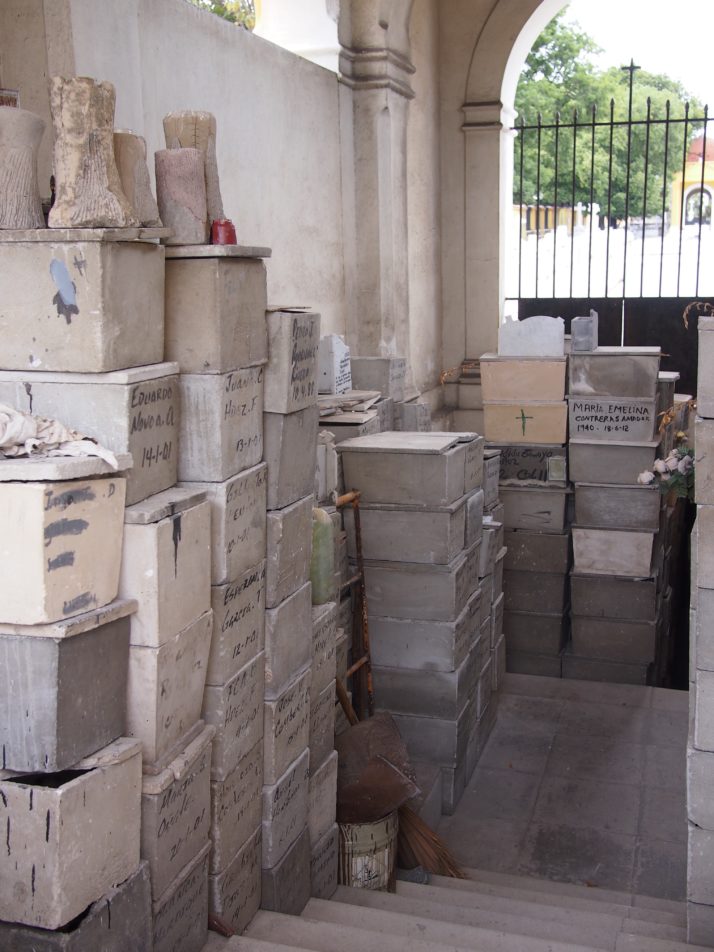 The Tobías Gallery is a 100m long underground gallery. We couldn’t enter but from what we could see from the doorway it looks to be piled high with small boxes like these which presumably contain bones or ashes
The Tobías Gallery is a 100m long underground gallery. We couldn’t enter but from what we could see from the doorway it looks to be piled high with small boxes like these which presumably contain bones or ashes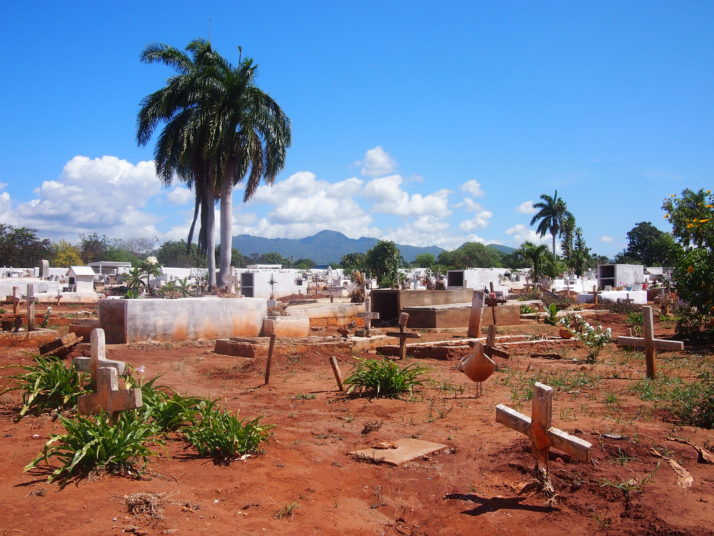 We visited the cemetery in Trinidad mainly to have a destination away from the tourist-filled city centre. We were rewarded with this tropically apocalyptic view.
We visited the cemetery in Trinidad mainly to have a destination away from the tourist-filled city centre. We were rewarded with this tropically apocalyptic view.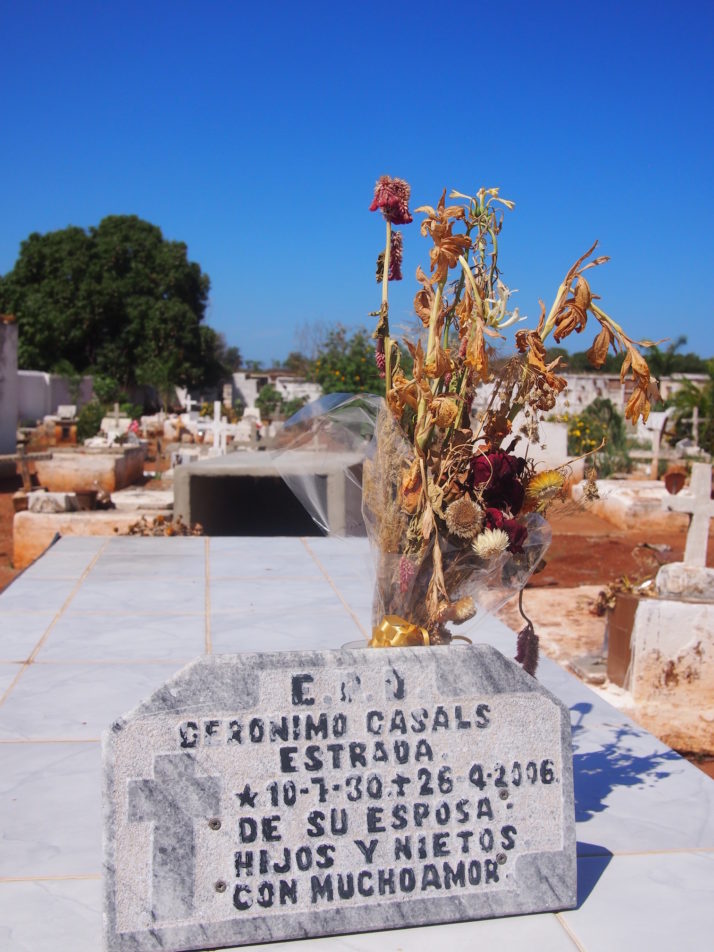 Flowers dry out very quickly in the hot Cuban sun and many graves had fake rather than fresh flowers.
Flowers dry out very quickly in the hot Cuban sun and many graves had fake rather than fresh flowers. This grave is topped with a statue of Babaluaye, one of the orishas from Santeria, the religion fused from African animisism and Catholicism. It also holds what I think is the remains of a cigar
This grave is topped with a statue of Babaluaye, one of the orishas from Santeria, the religion fused from African animisism and Catholicism. It also holds what I think is the remains of a cigar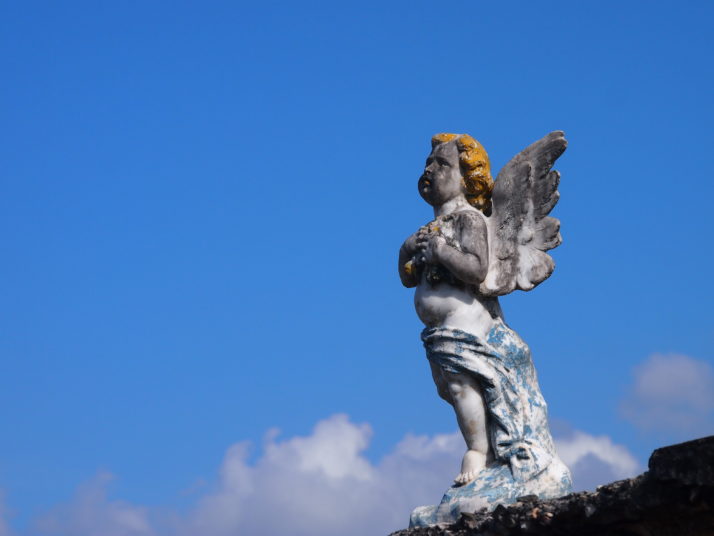 A forlorn and battered cherub tops a tomb in Morón
A forlorn and battered cherub tops a tomb in Morón
